After five rounds in the Premier League, we can say that Liverpool have performed relatively well in the new era under the management of Arne Slot so far; they are currently sitting in second place with 12 points, just one behind Manchester City.
It is still early to judge Liverpool, but thus far, they are progressing steadily.
They possess the best defence in the league, with only one goal conceded in five matches.
Additionally, they have the third-strongest attack in the league, tied with Aston Villa, having scored 10 goals, trailing only Manchester City and Chelsea, with 13 and 11 goals, respectively.
On the European stage, no one forgets Liverpool’s two goals against AC Milan from set-pieces, raising the question of who the current set-piece coach is for Liverpool.
This inquiry comes especially after Liverpool submitted a request to hire a set-piece coach on LinkedIn in May.
Reports indicated that they decided to put their search on hold after Aaron Briggs, whose original title was First Team Individual Development Coach, successfully took on the role as Vitor Matos’ replacement following his arrival in July.
This tactical analysis will discuss Liverpool’s new structure under Arne Slots during attacking corners, highlighting its advantages and disadvantages.
It is important to note that it is still early, and there is still enough time for them to develop these strengths and address their weaknesses.
However, overall, they have demonstrated a good capability in attacking corners with various tactics they can build upon.
Virgil Van Dijk’s Starting Position
In Jürgen Klopp’s era, Virgil van Dijk used to start in late positions near the penalty spot or even behind it.
They keep using this idea, but they also have a new scheme with some players. Virgil Van Dijk is one of them, behind the zonal line near the goalkeeper, and we will talk about each of them.
Starting with the traditional starting position, it is shown below that the opponent defends with zonal defenders except for a man marker on Virgil van Dijk.
At the same time, Liverpool target Virgil in the black area, so three green attackers spread in front of the zonal defenders to delay the reaction of any of them who decides to go out to the targeted area.
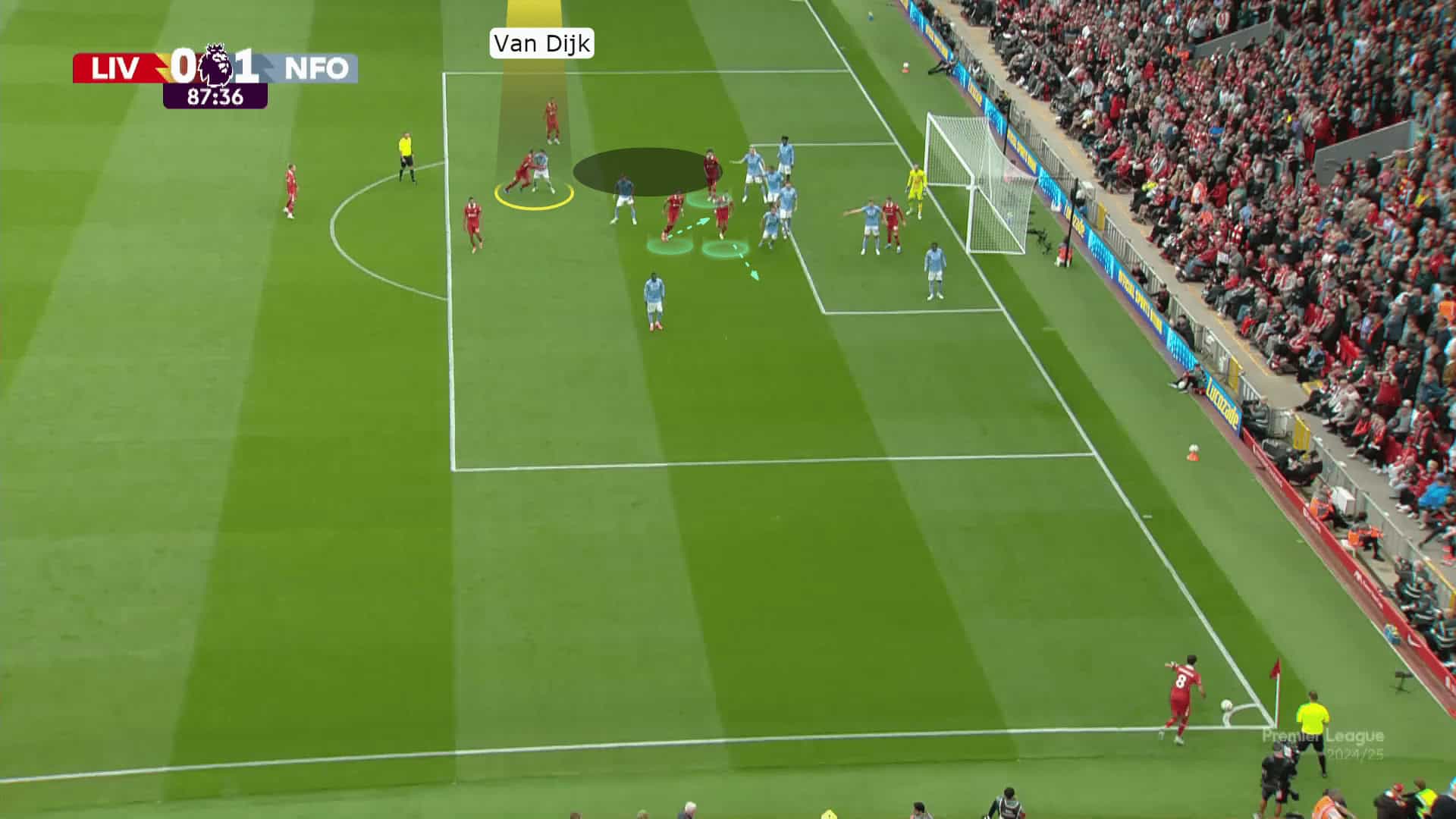
After this delay, the zonal defender even starts to go out late or can’t reach Van Dijk, who overcomes his marker at the right moment at the highest jump, as shown below.
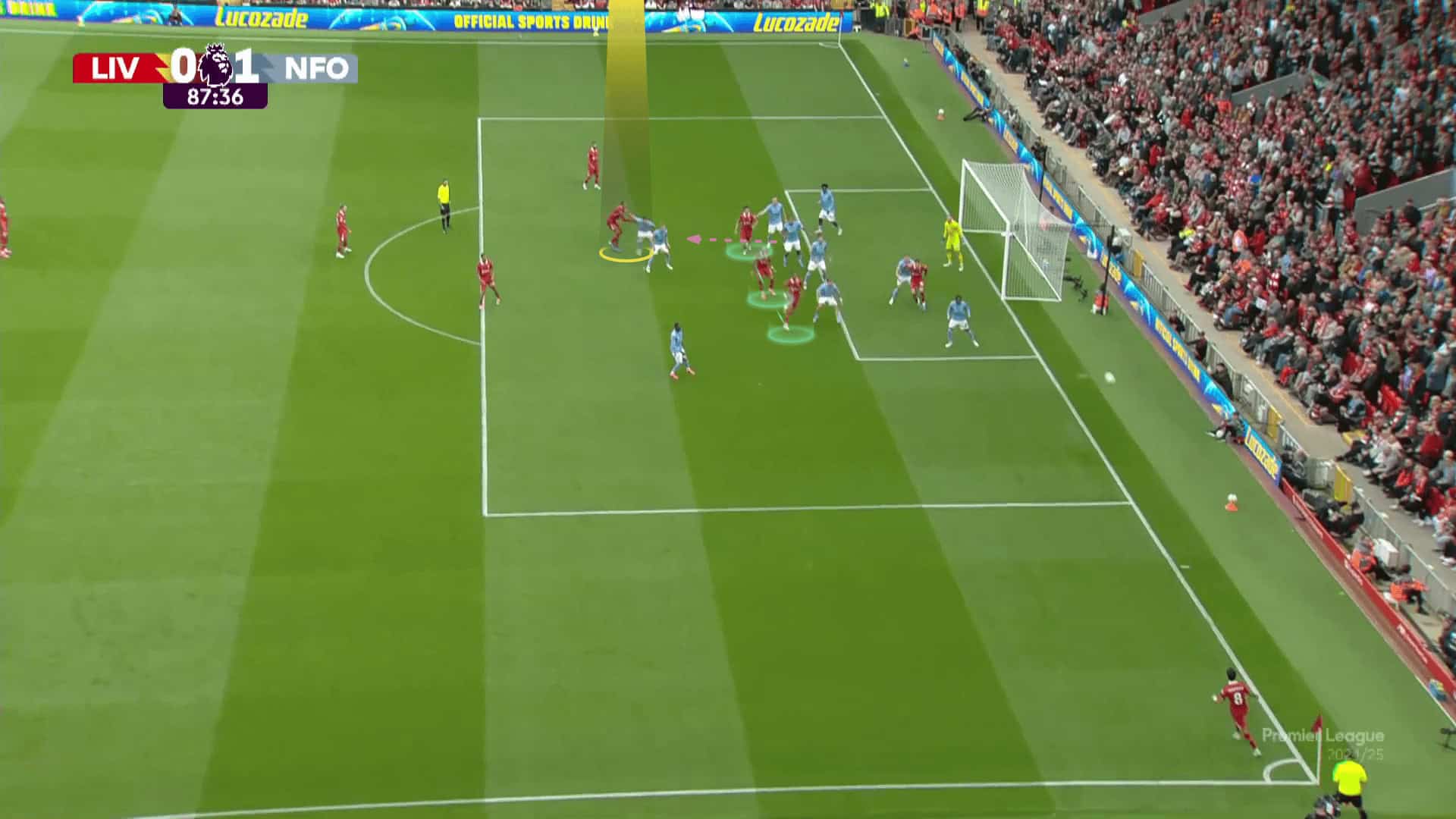
The plan works while three white players wait for the ball if Virgil can’t target the goal directly, as shown below.
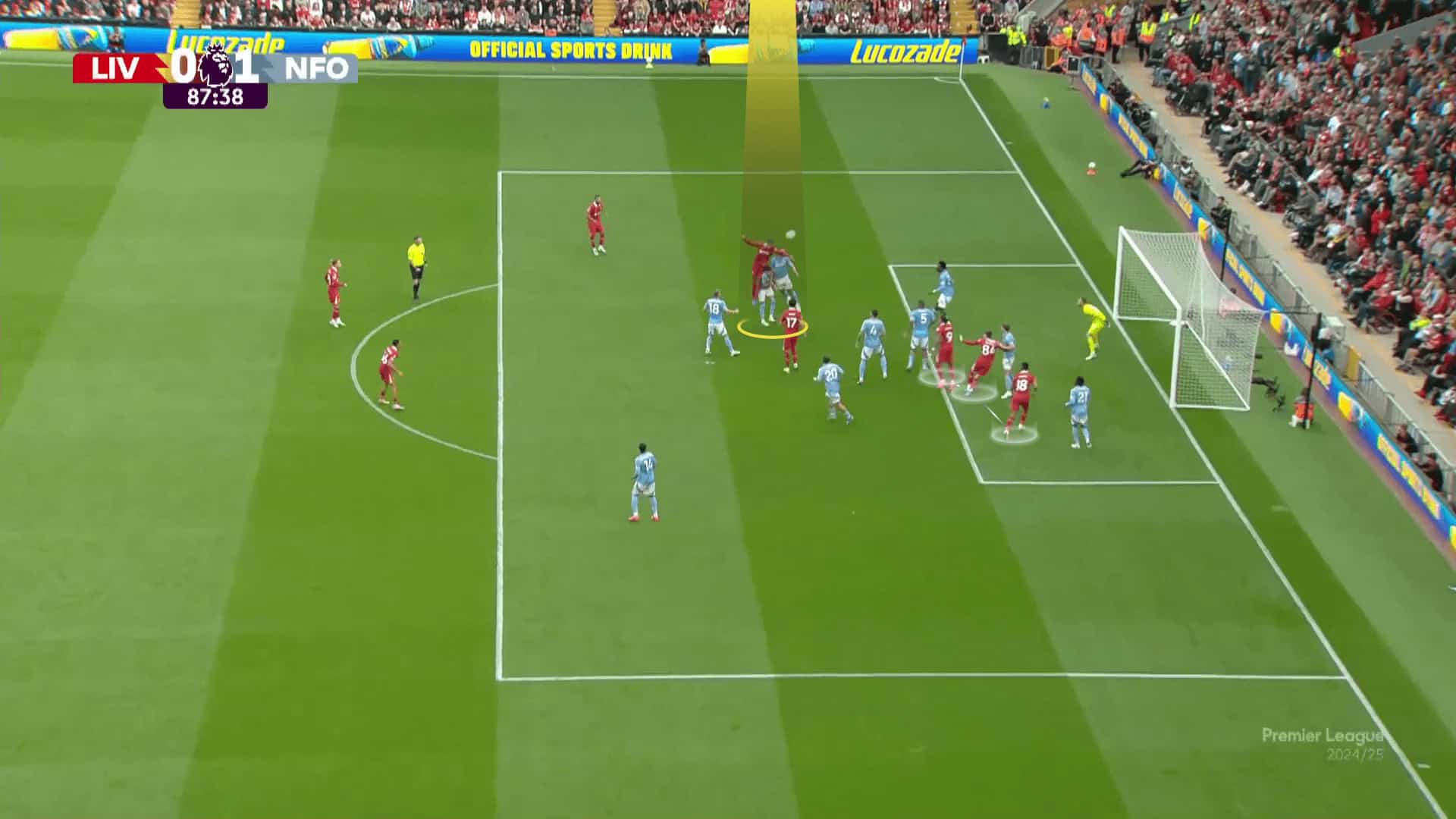
They do that in a similar form, with Virgil Van Dijk standing in a vertical line with his mates, a stack, to find a way to escape from his man markers.
He wins the first touch far away from the zonal line, as shown below.
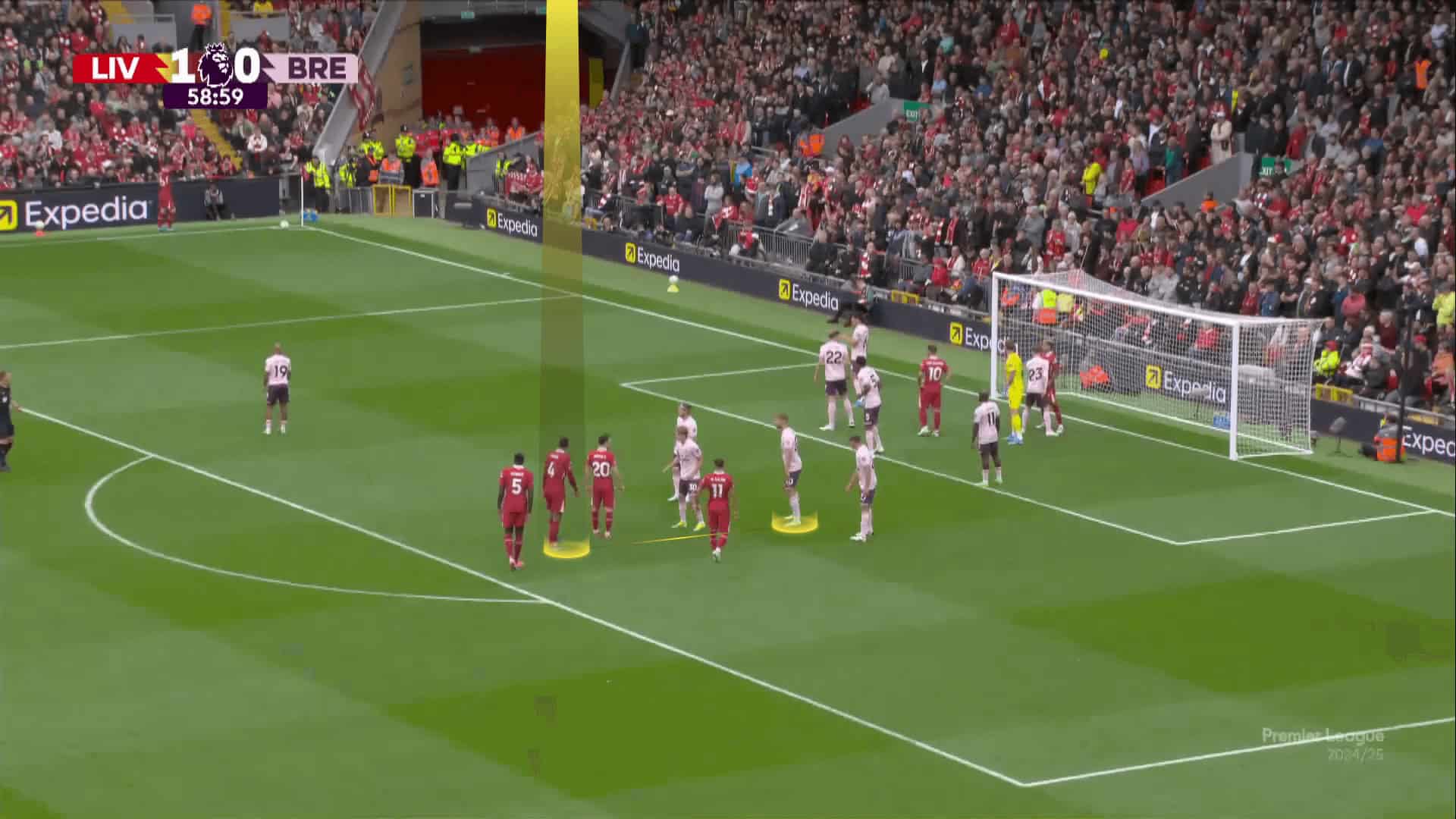
The two other players in the stack move first to the left while he moves late to the right and is now separated from his man marker.
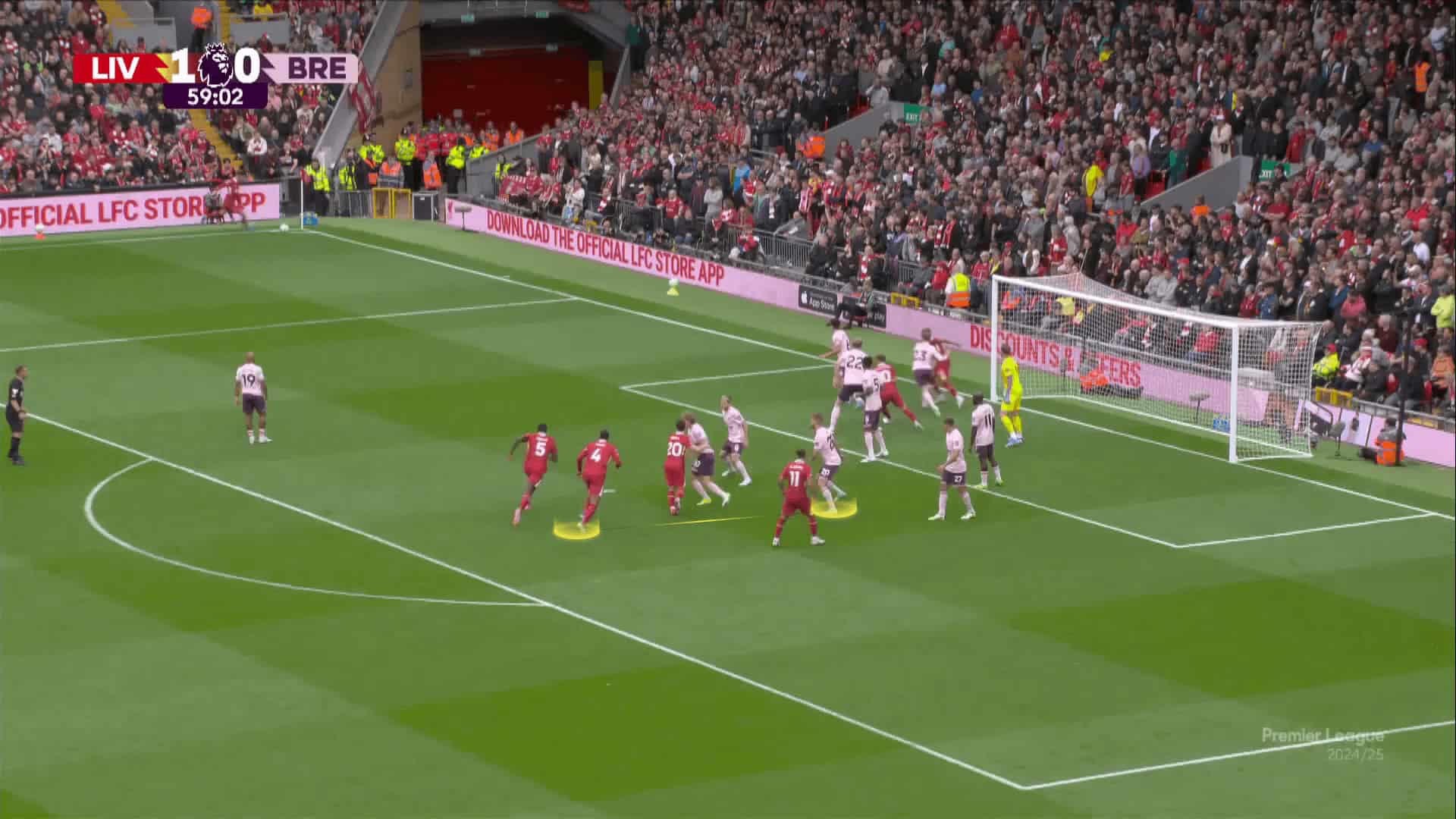
His mates block their two-man markers, preventing them from going to Van Dijk, who can now jump higher than his marker, showing his abilities in aerial duels because of this separation between him and his marker, as shown below.
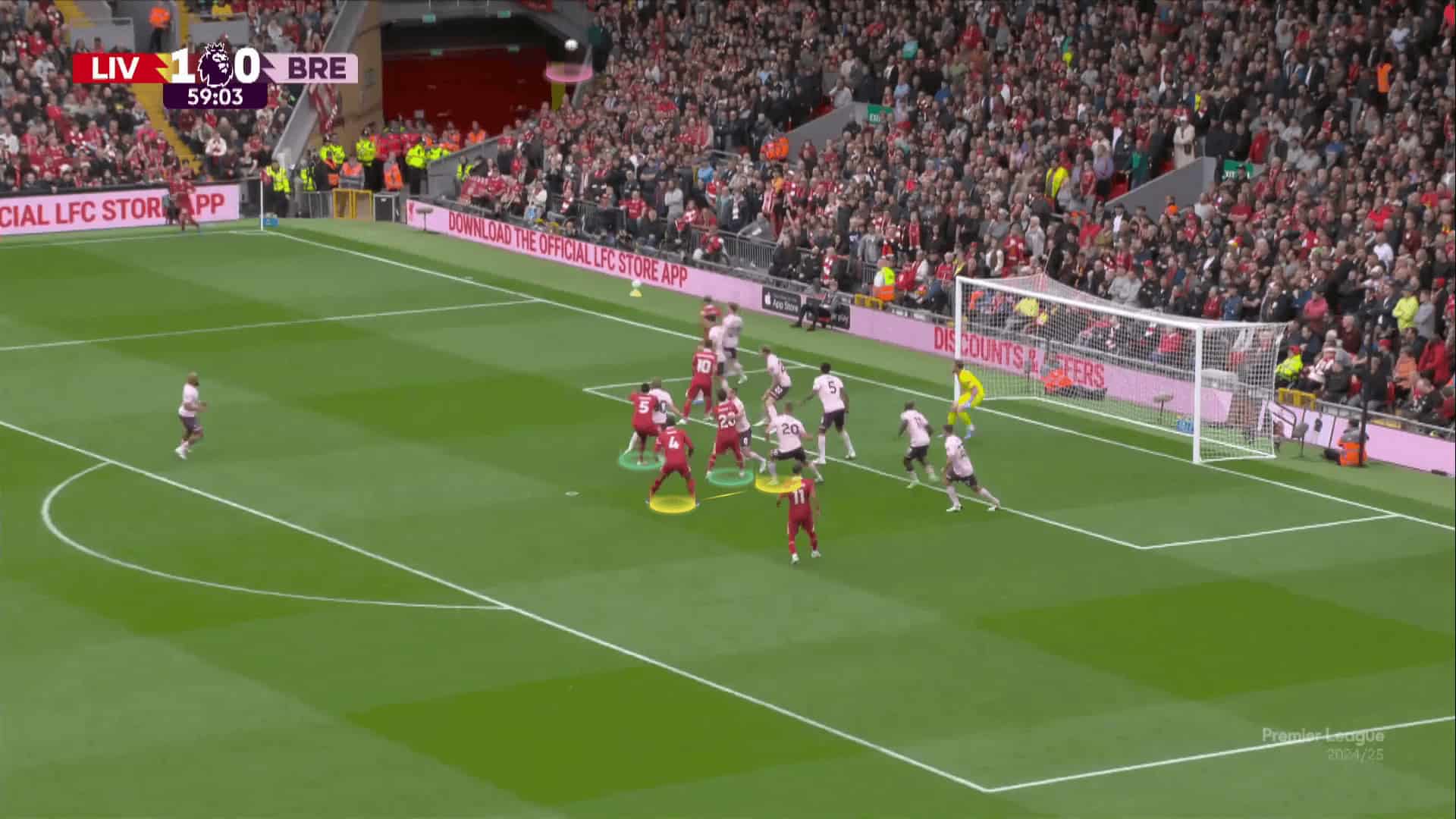
Going to the new method, they have another method of having three players.
Virgil Van Dijk is one of them, near the goalkeeper behind the zonal, as in the case below, but let’s see how AC Milan defends at first.
In the photo below, AC Milan defends with five zonal defenders, three man markers inside the six-yard line, a short-option defender, and a rebound defender.
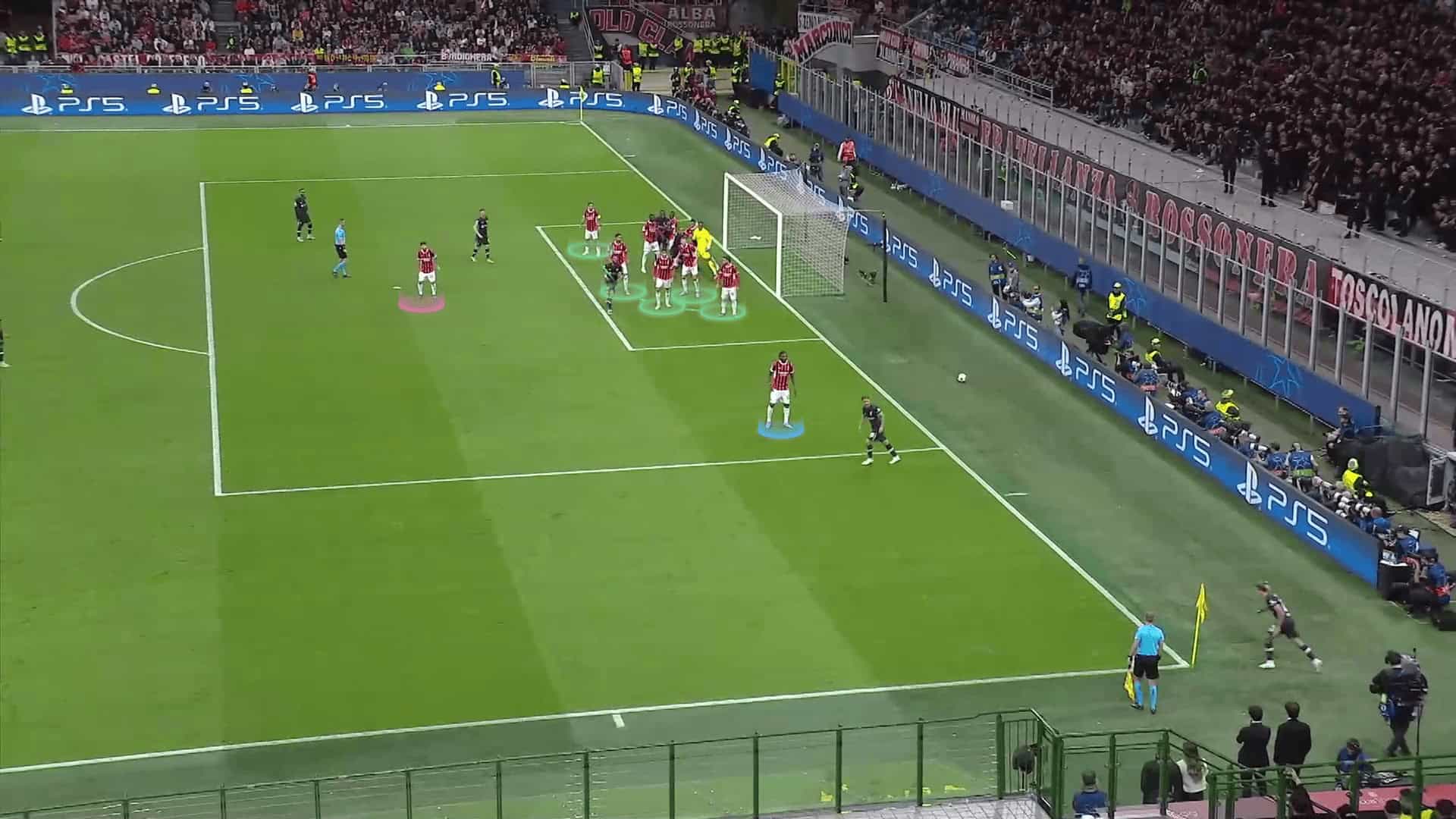
Going to our topic, Virgil van Dijk stands behind the goalkeeper, which means that the goalkeeper can’t track the ball in the air and Van Dijk at the same time, so he uses his hand to keep physical touch with him while tracking the ball in the air, as shown below.
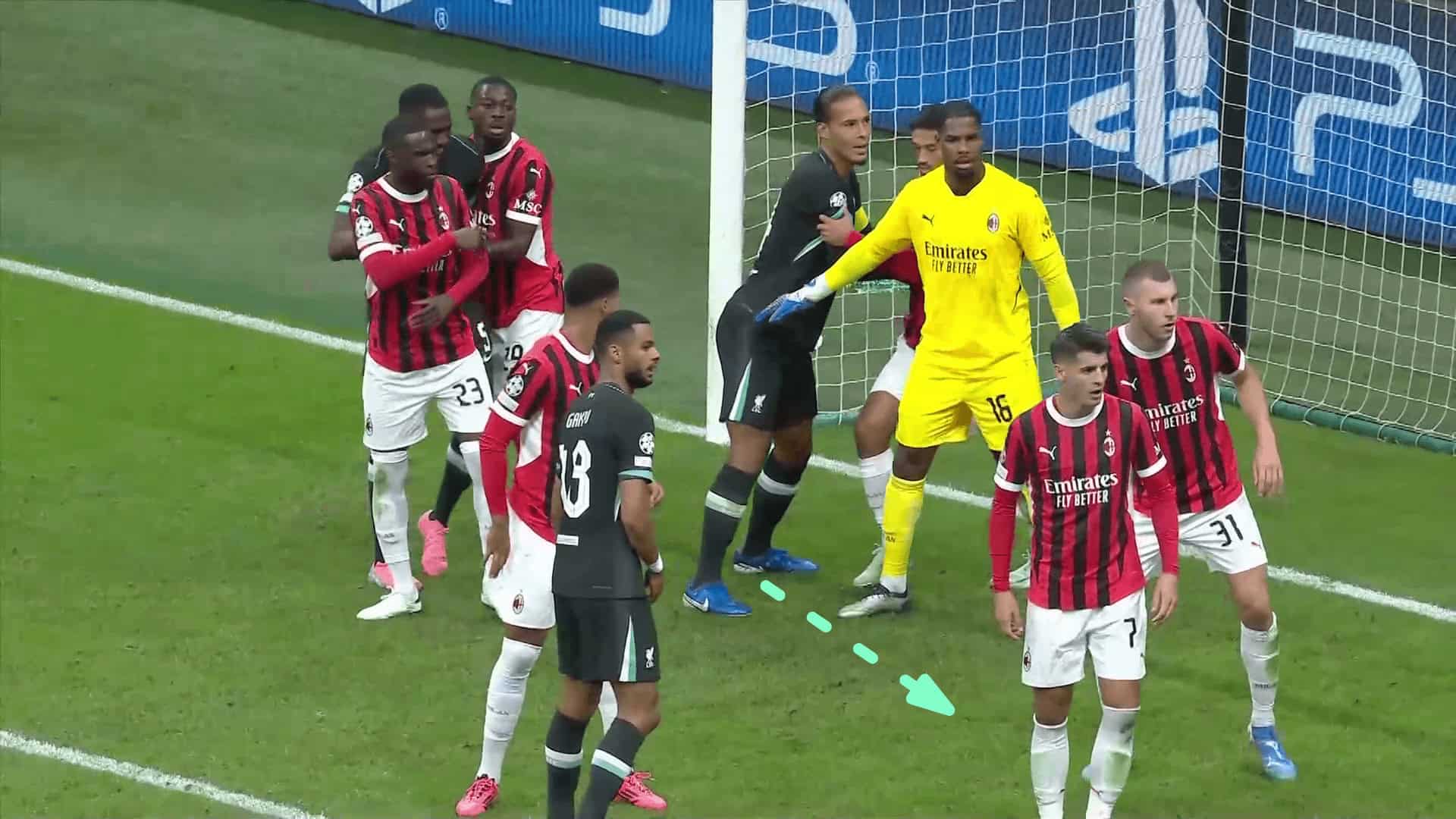
After that, Van Dijk pushes his marker and goes to chase the ball from the zonal defender’s blind side.
At this certain moment, the goalkeeper can’t notice that at the right time because he is busy with the ball while Van Dijk moves from his blind side, as shown below.
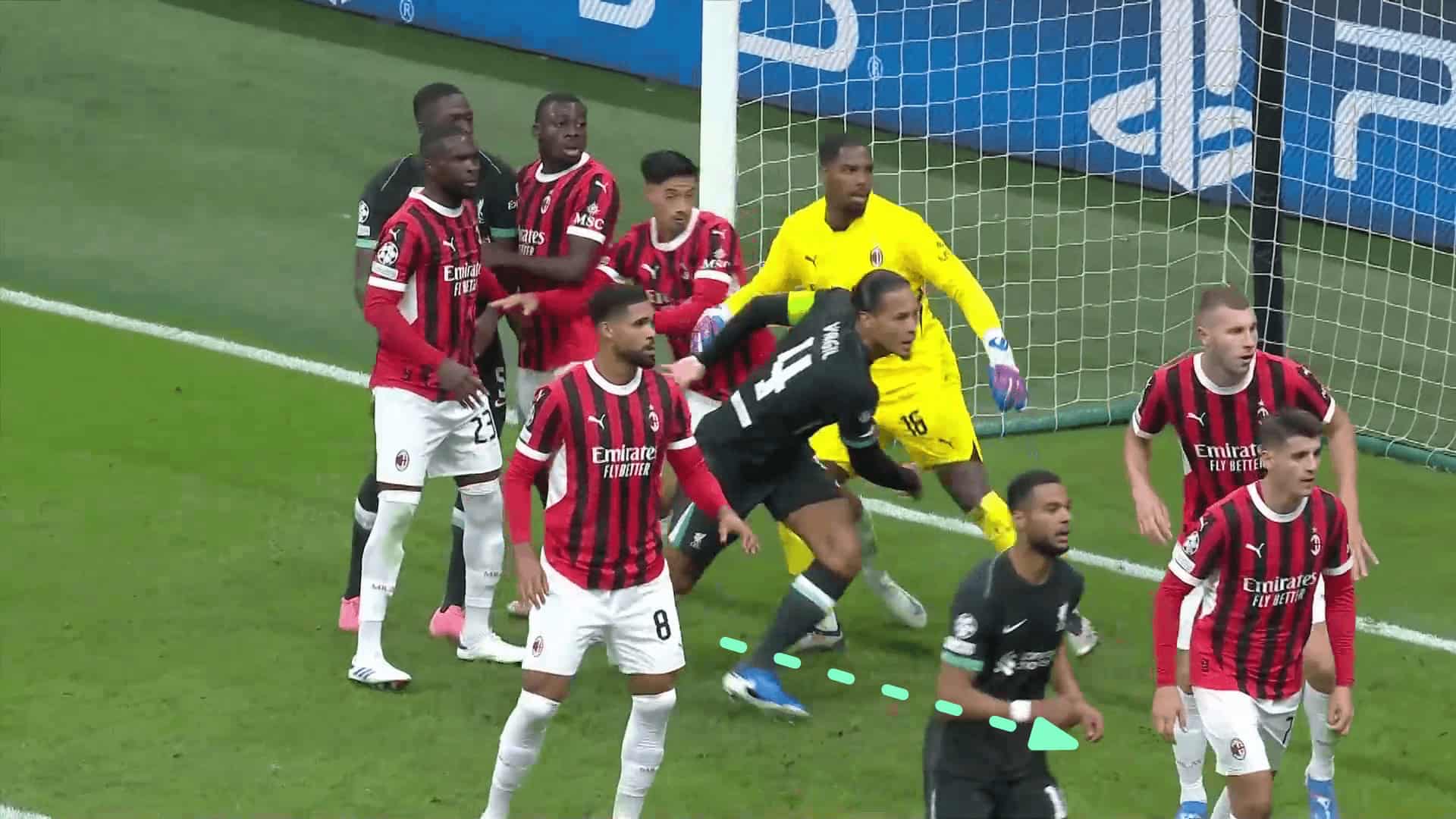
When the zonal defender steps back, he finds the strong Van Dijk standing at his back and jumping from his blind side.
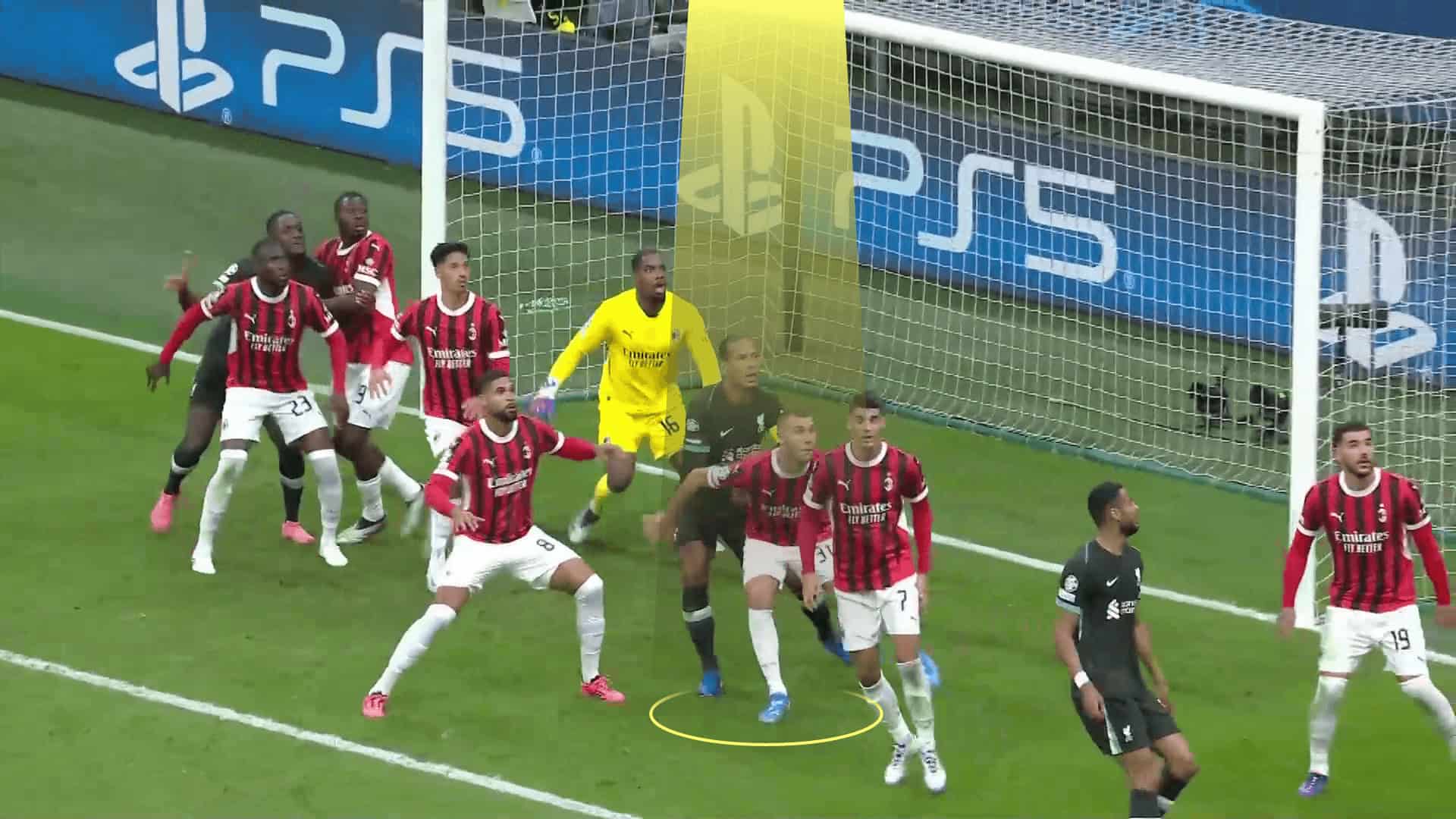
The plan works, and the result is a goal.
We want to highlight that Virgil Van Dijk is superb in this mission in general because he is so strong that he can push the marker, move around the goalkeepers, come from the zonal defenders’ blind side, block or jump so high from a steady state in a crowded area.
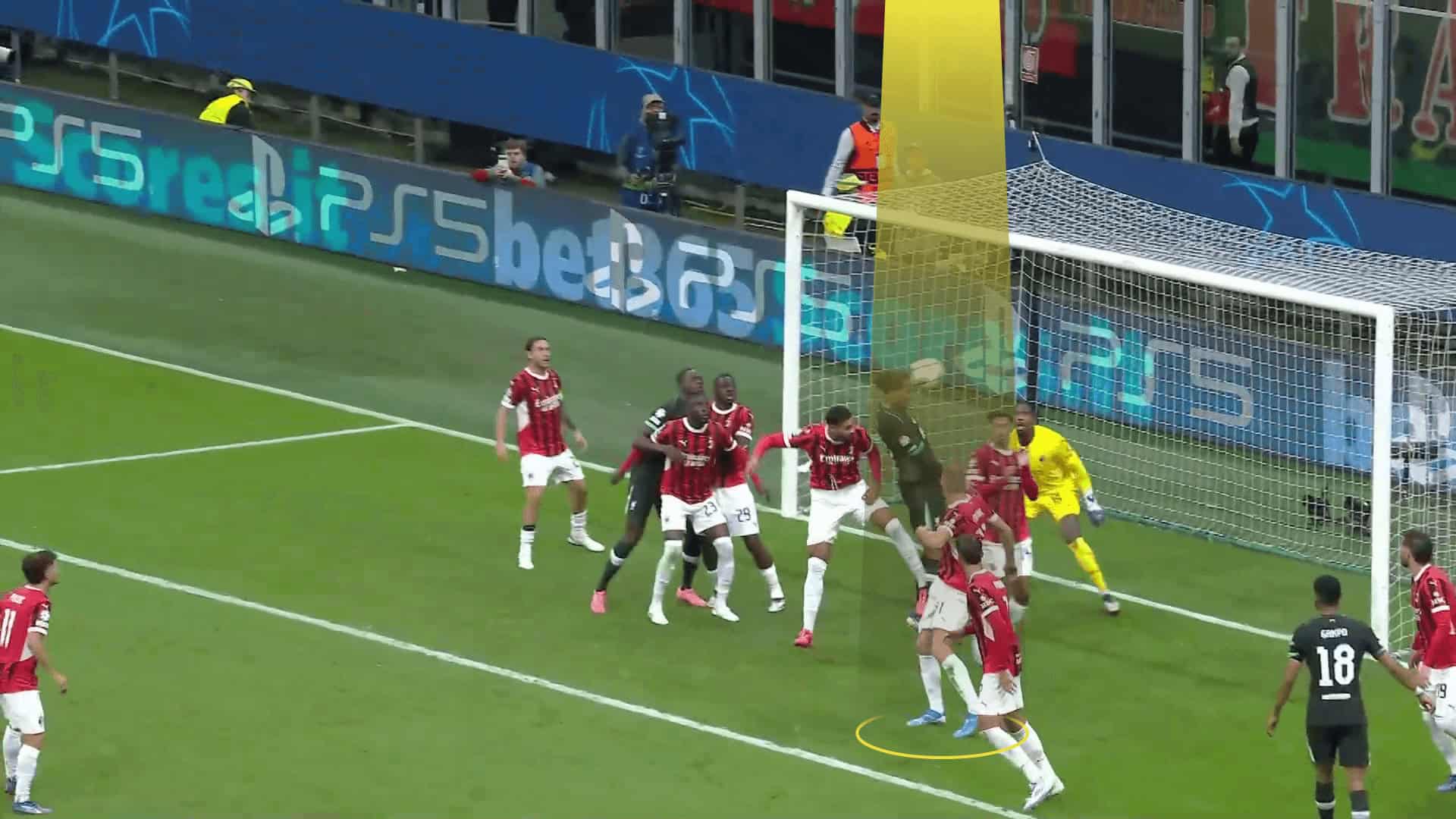
In another case, the opponent defends with zonal defenders except for one marker with Van Dijk, but we want here to focus on the first zonal line (green).
Most good teams deal with that traffic behind the zonal line by asking the whole line to step back, not leaving enough area between them and the goalkeeper and not to find the cross landing at their back, as in the previous case, but in this case, the third zonal line drops more than his mates.
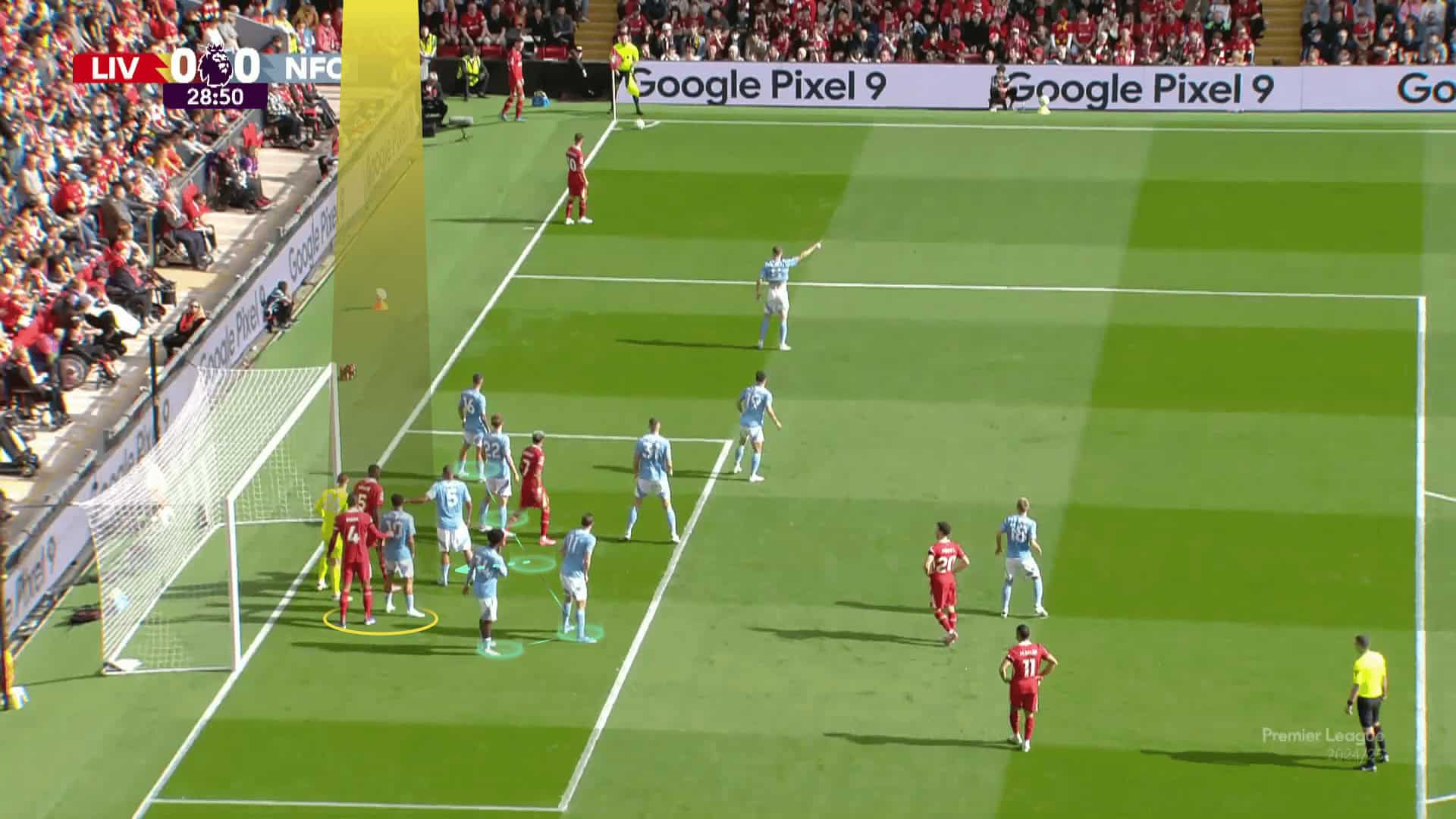
This forms a gap that can be targeted with a runner from the penalty spot.
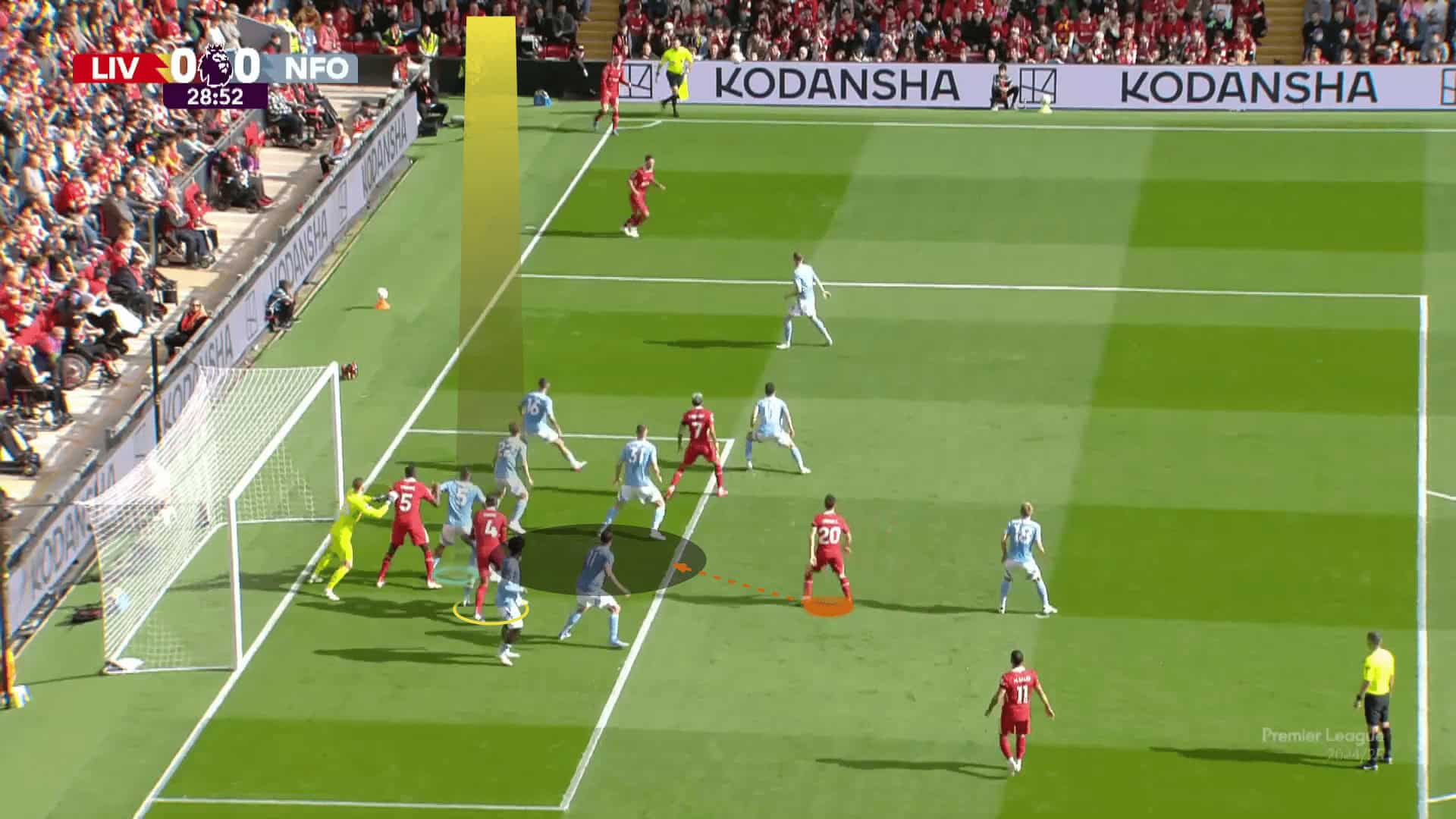
This zonal defender doesn’t know what he should do: keep standing on Virgil van Dijk’s side or go up to prevent the orange attacker from targeting this gap while a player still stands on the goalkeeper, preventing him from claiming the ball, as shown below.
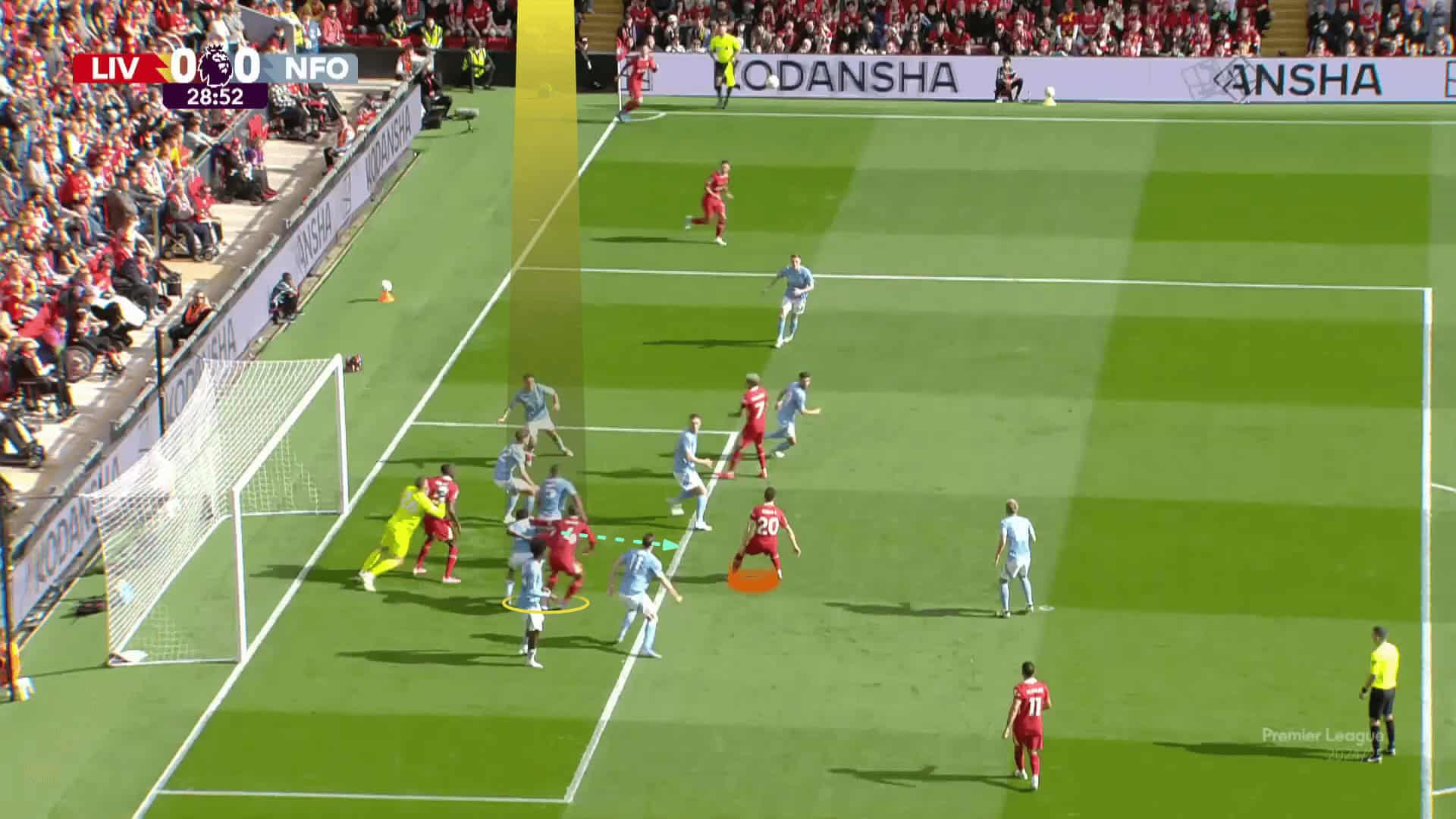
Targeting The Goal Directly
As another related plan, they use all of the previous steps to target the ball directly while the goalkeeper is busy with the traffic in front of him.
In this example, Ibrahima Konaté runs from his teammate’s back to drag the first zonal defender a little forward.
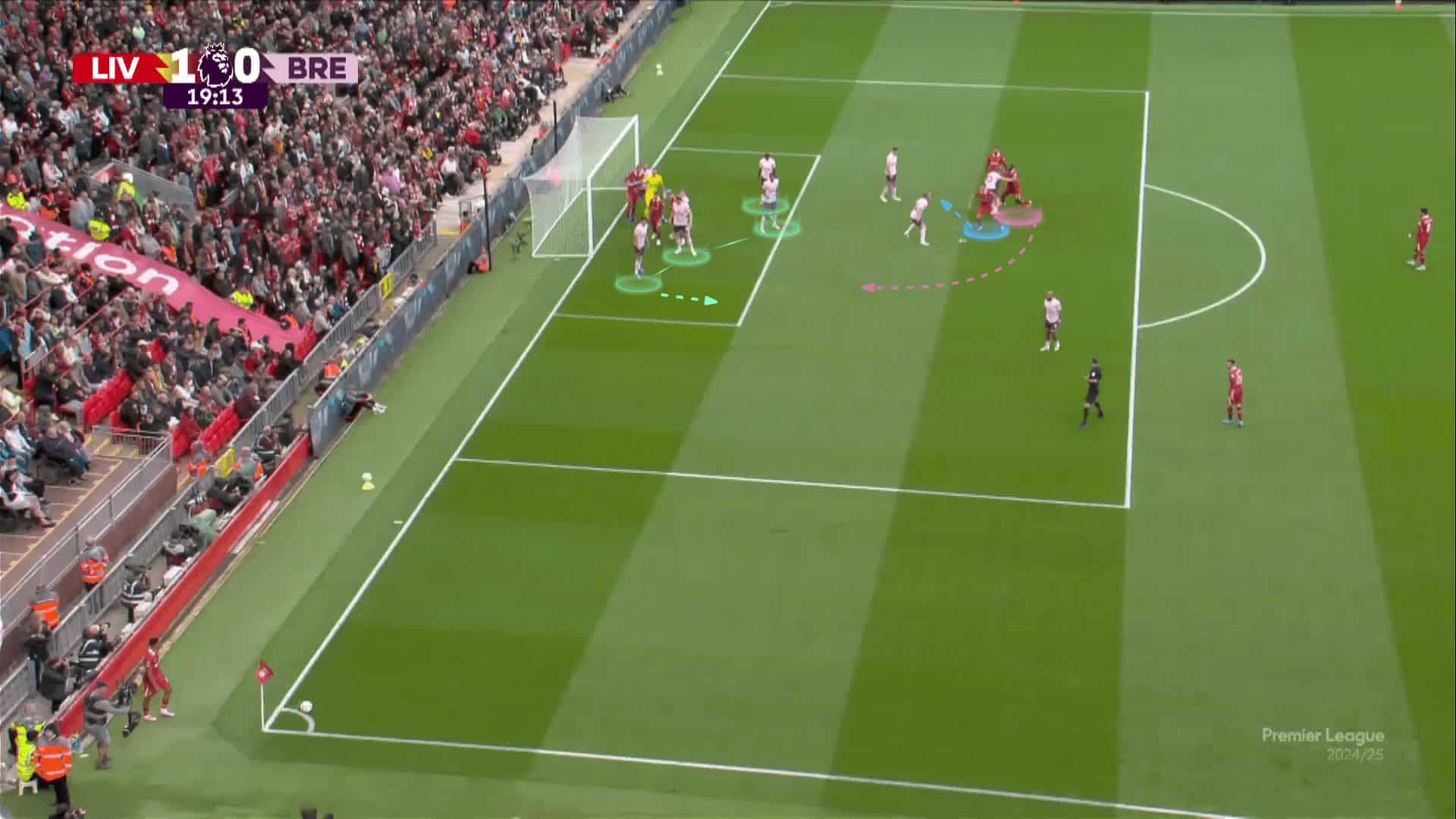
The three players inside the six-yard box stand around the second zonal defender try to block him, while Van Dijk’s movement around the goalkeeper attracts his attention.
The first zonal defender is in difficulty, too, because he chooses between going forward toward Ibrahima Konaté (pink) or still fixed to protect the goal itself.
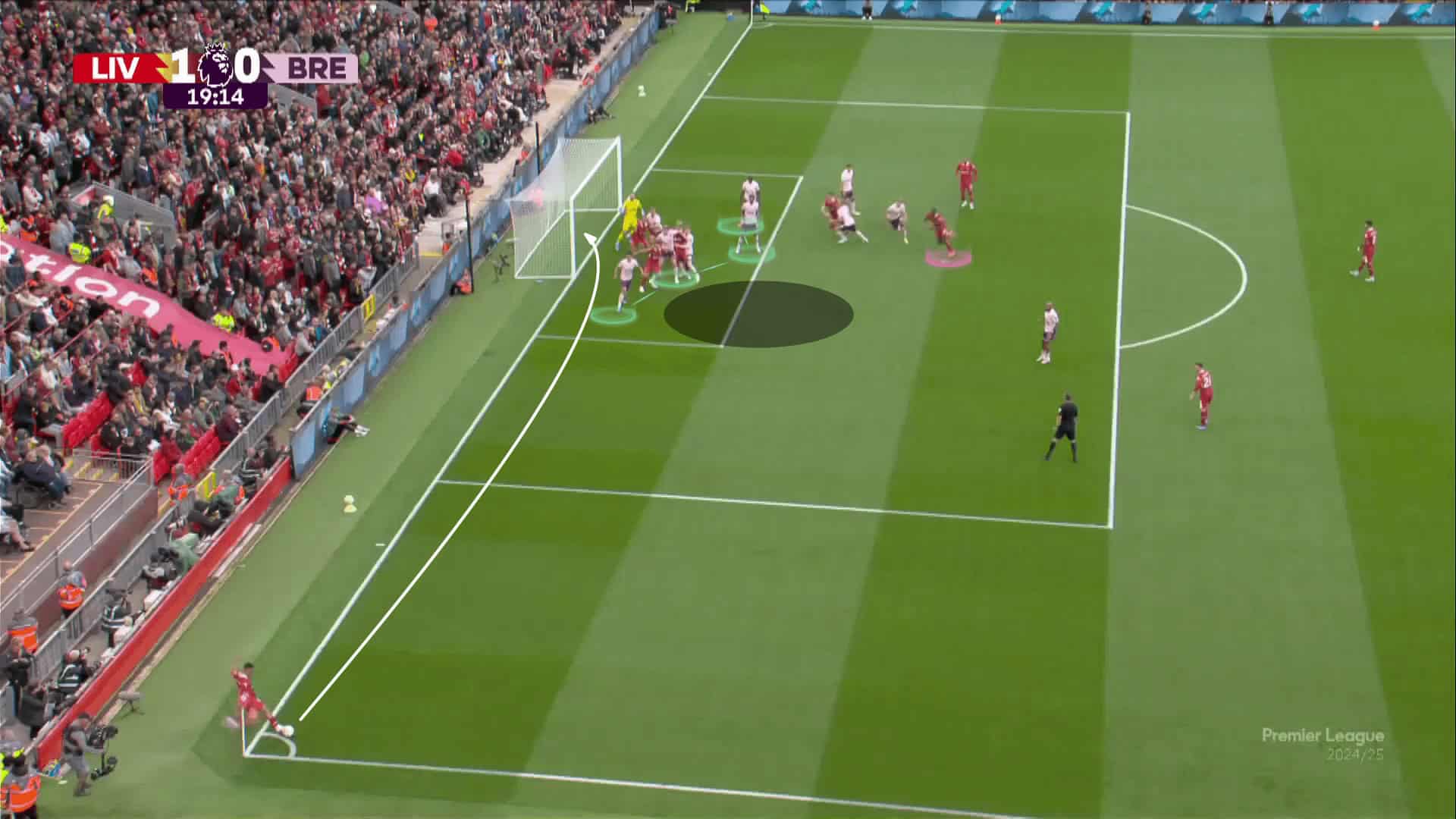
The block to the second zonal defender wasn’t good, so the second zonal defender managed to reach the ball at the last moment.
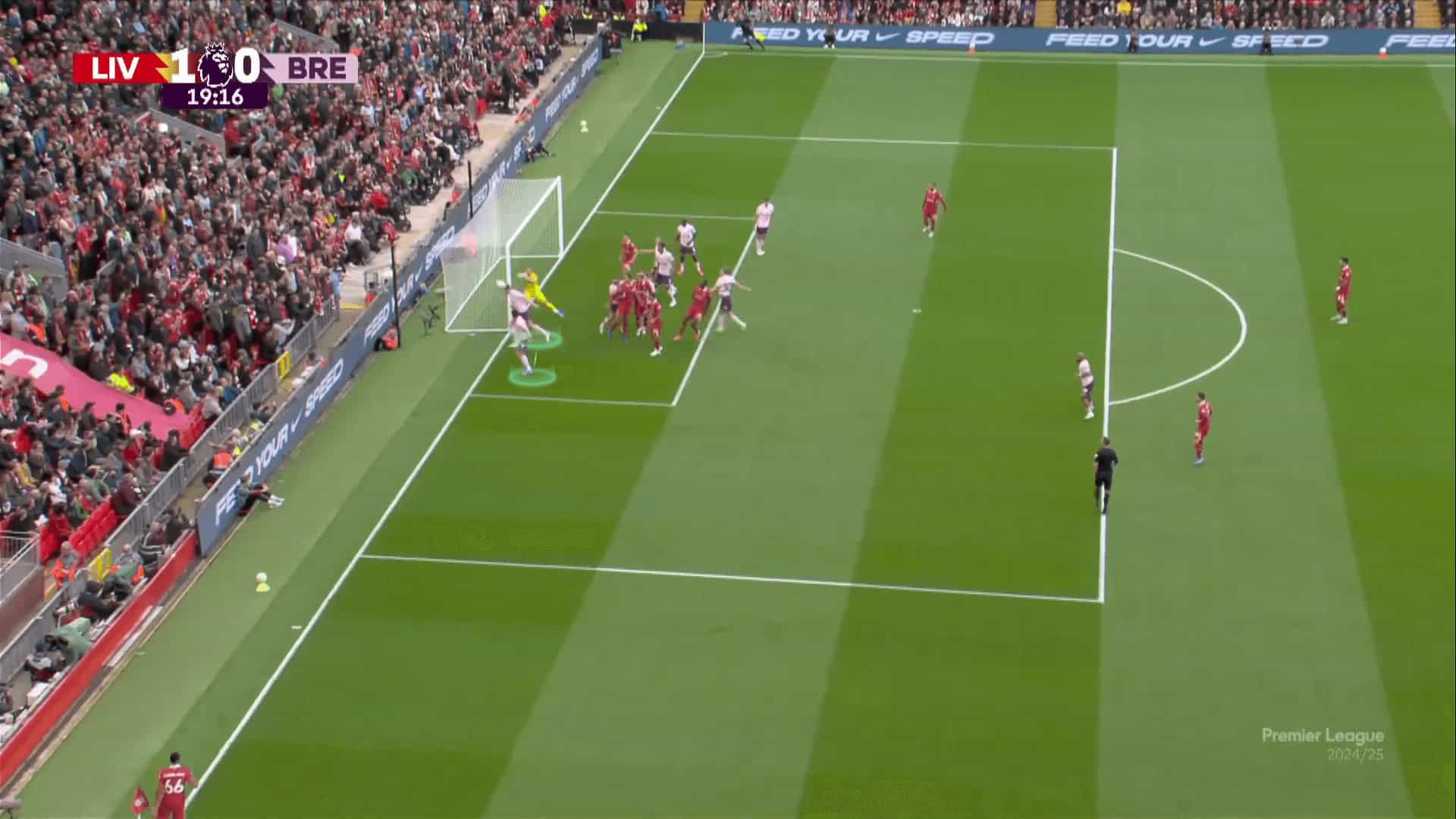
Similarly, they use a good idea, but with targeting one or two players from the three players inside the six-yard too, but let’s remember Brentford’s green four zonal defenders at first.
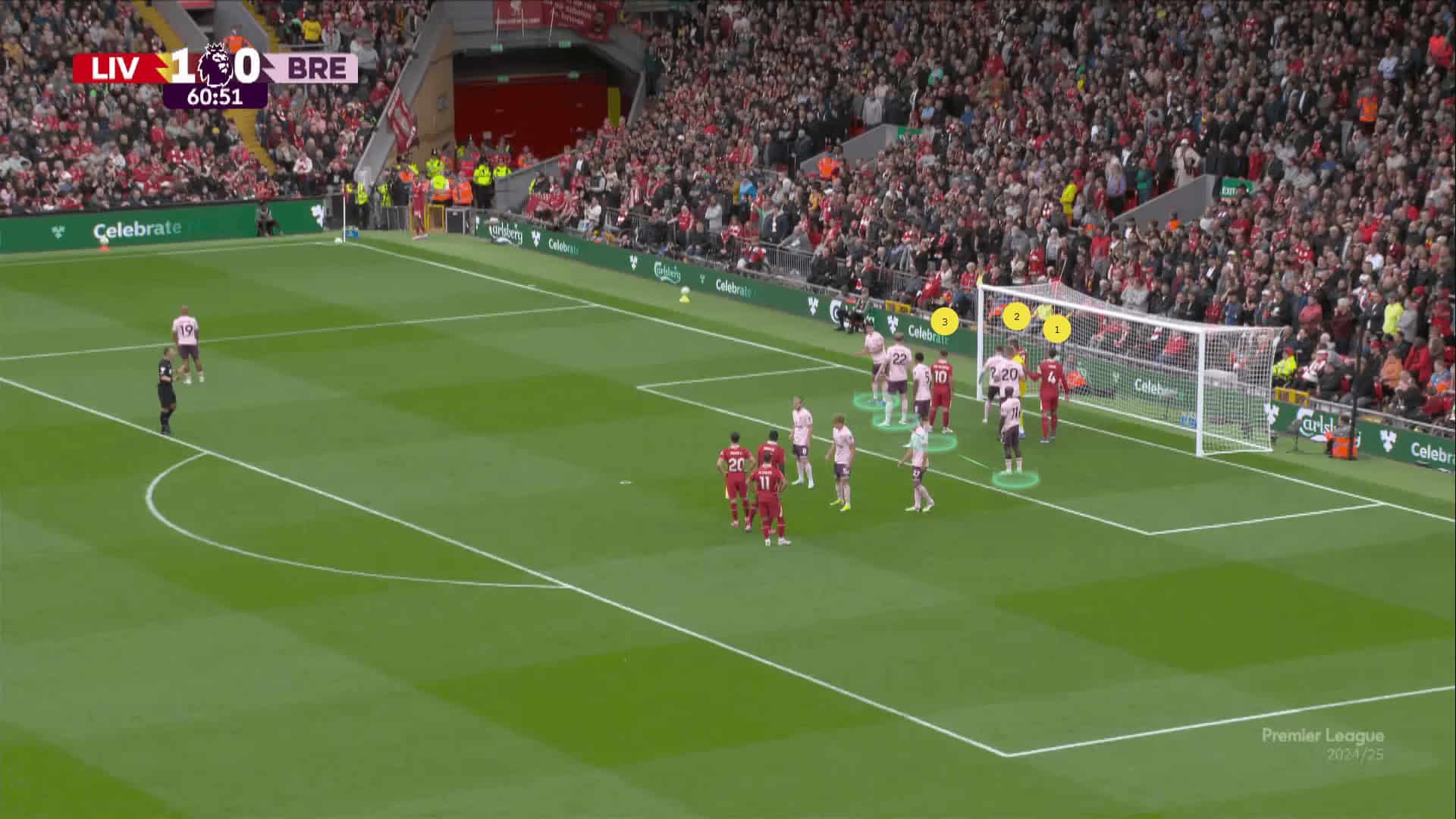
The two orange movements are to drag the first zonal defender while the two yellow players, the unmarked Alexis Mac Allister and Virgil, target the area behind him.
As in the two photos below, Alexis Mac Allister goes to the formed gap in front of the second zonal defender from his blind side while Virgil goes behind him.
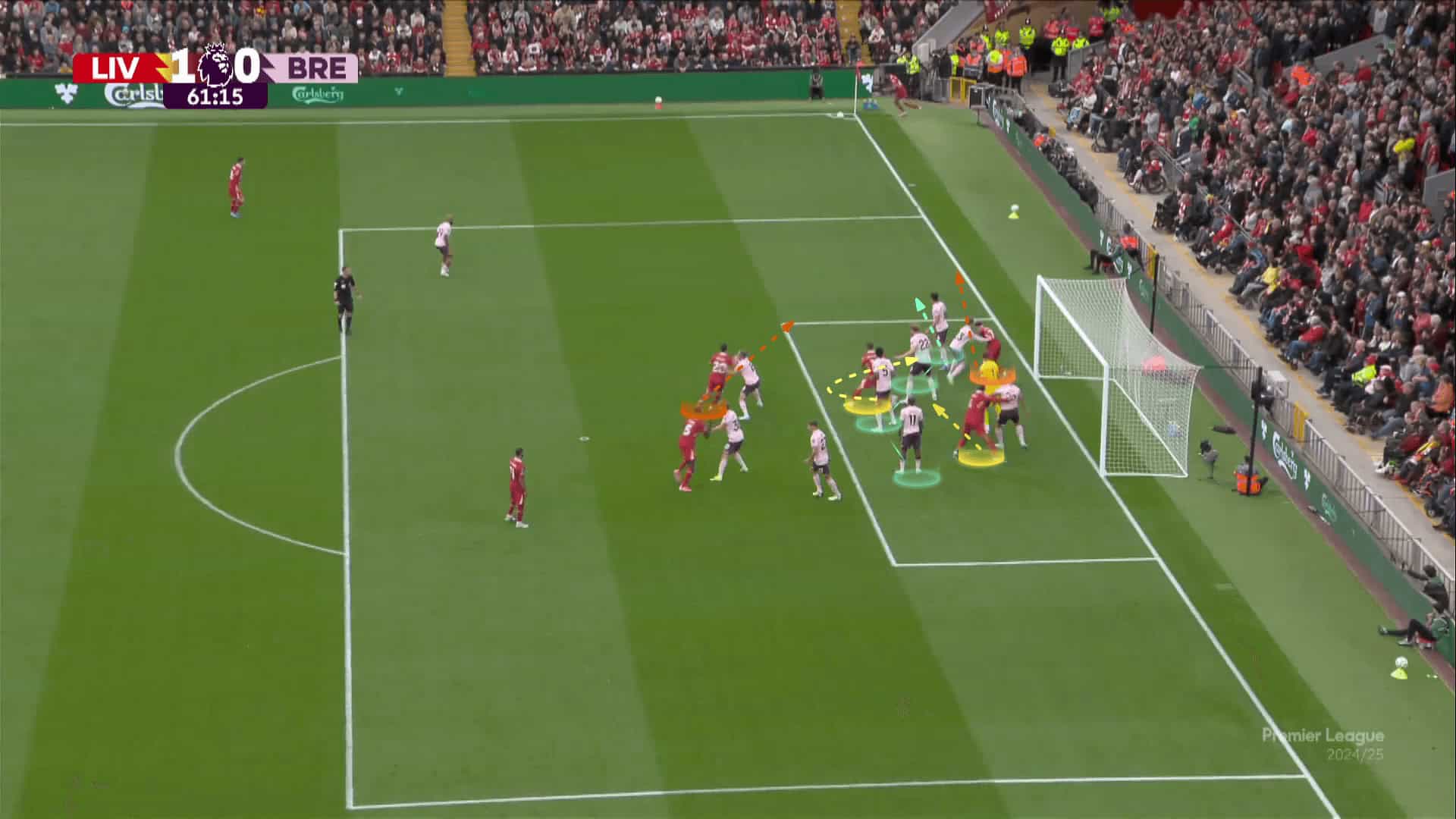
The plan works, but the ball hits the post.
The good thing about this idea is that the cross finds its way toward the goal, even if it didn’t touch anyone.
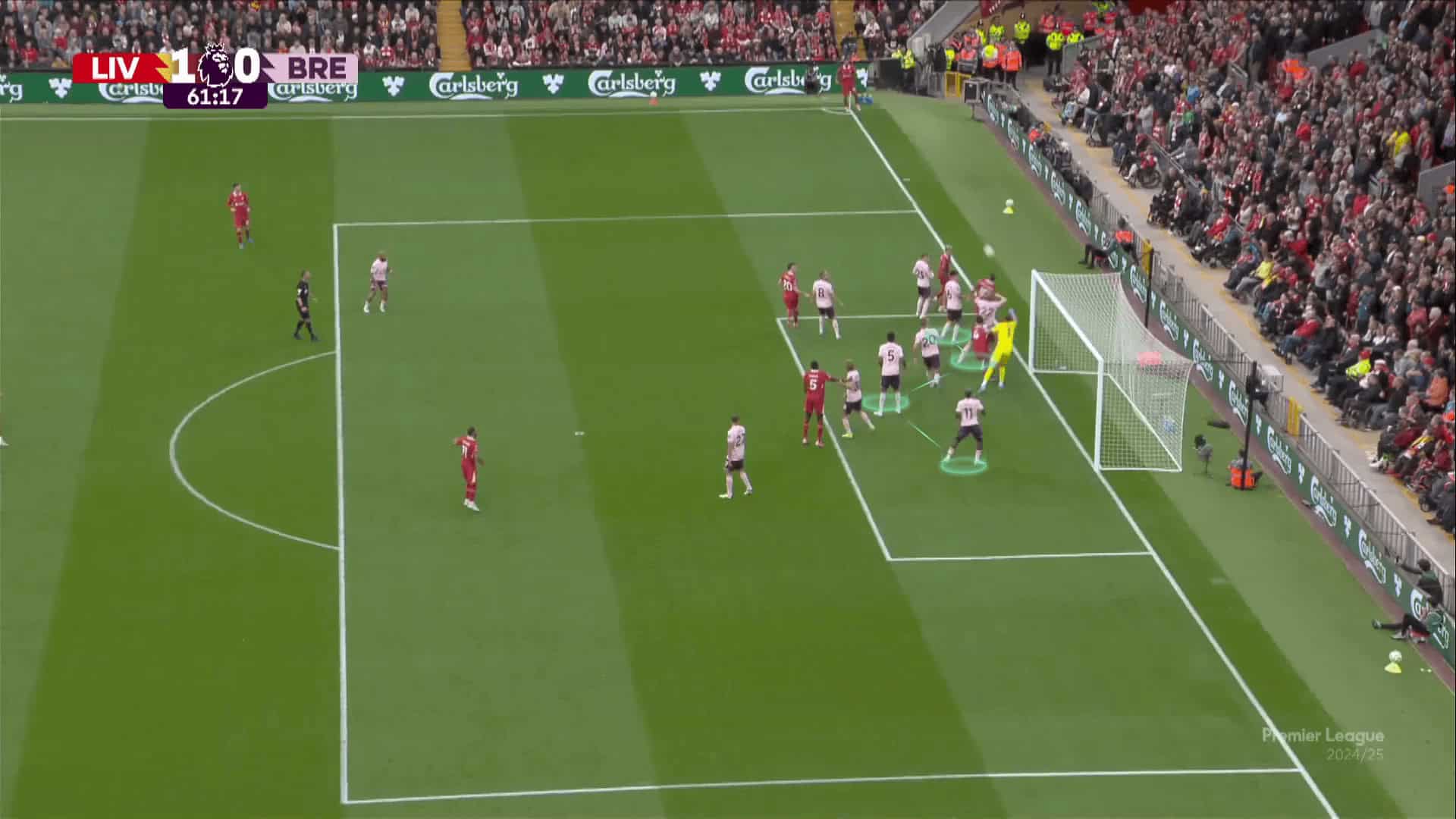
Finding A Flat Passing Lane
They also have a simple and very effective tactic of asking the attackers to run towards the zonal defenders, dragging their markers with them.
They also ask a short-option attacker to get closer to attract the opponent’s player, who stands on the edge of the box, to find this flat passing lane toward a player who pretends that he stands on the edge of the box for the rebound, as in the two photos below.
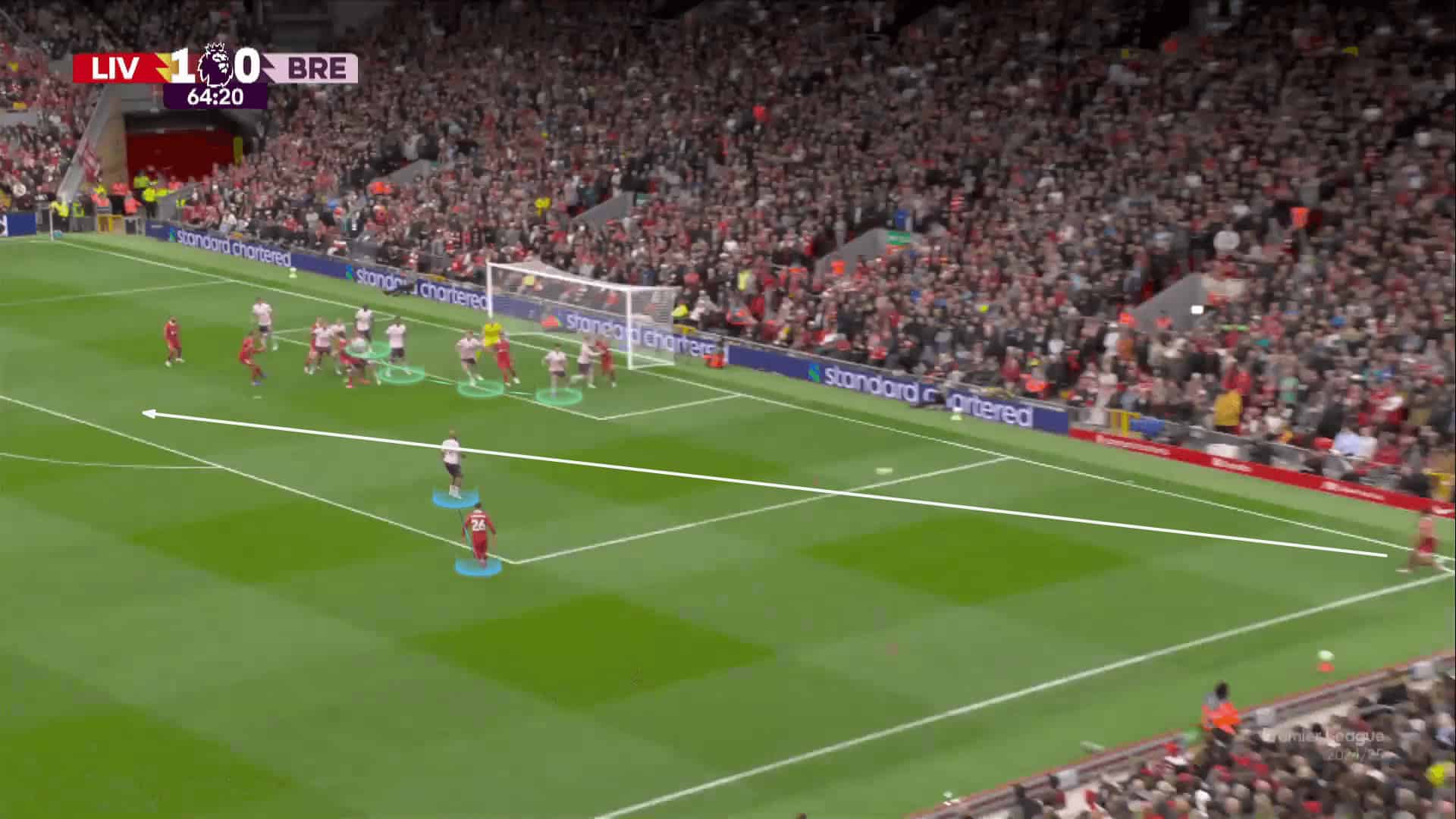
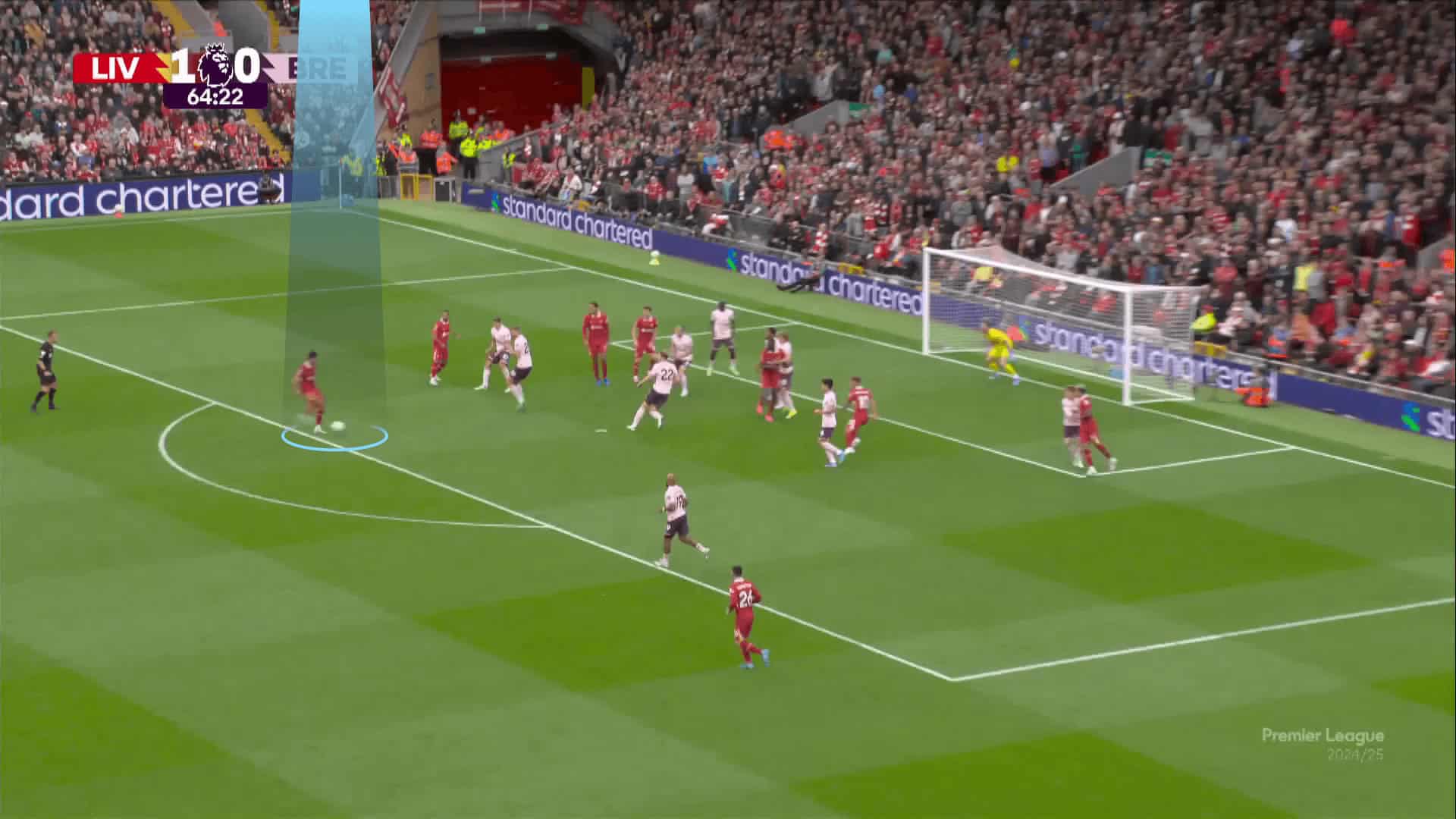
Similarly, they relied on a similar tactic against Manchester United, but let’s know how Manchester United defended at first.
As in the photo below, they defend with four zonal defenders, a short-option defender, a rebound defender and the remaining four man markers.
Mohamed Salah runs suddenly toward the taker, dragging the first zonal defender and his marker with him to receive a short pass and then passes it back to the taker, who passes it flat directly to the unmarked Alexis Mac Allister (yellow).
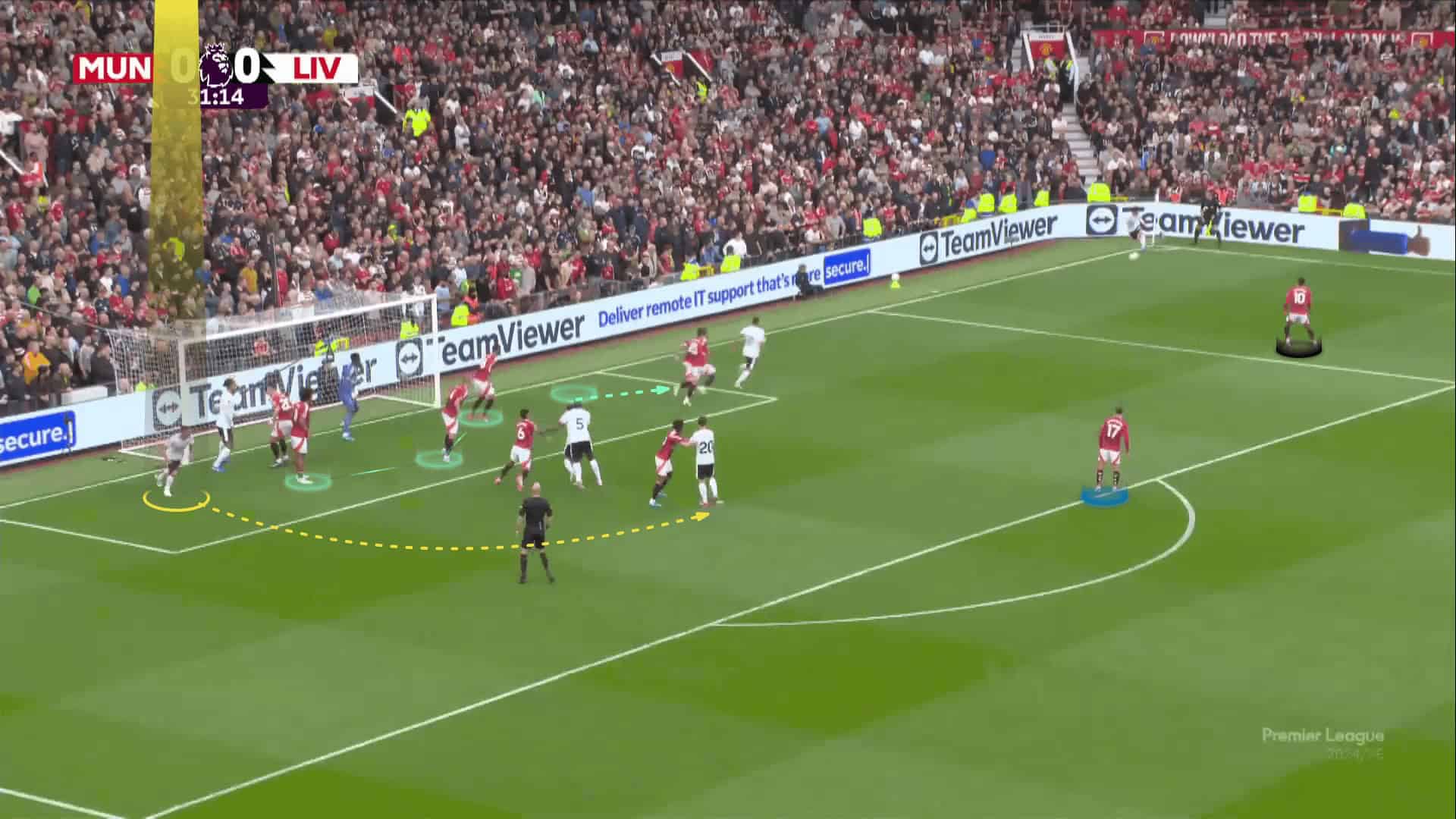
The remaining attackers’ role is to run towards the remaining three zonal defenders, trying to block them and prevent them from going forward to chase the ball.
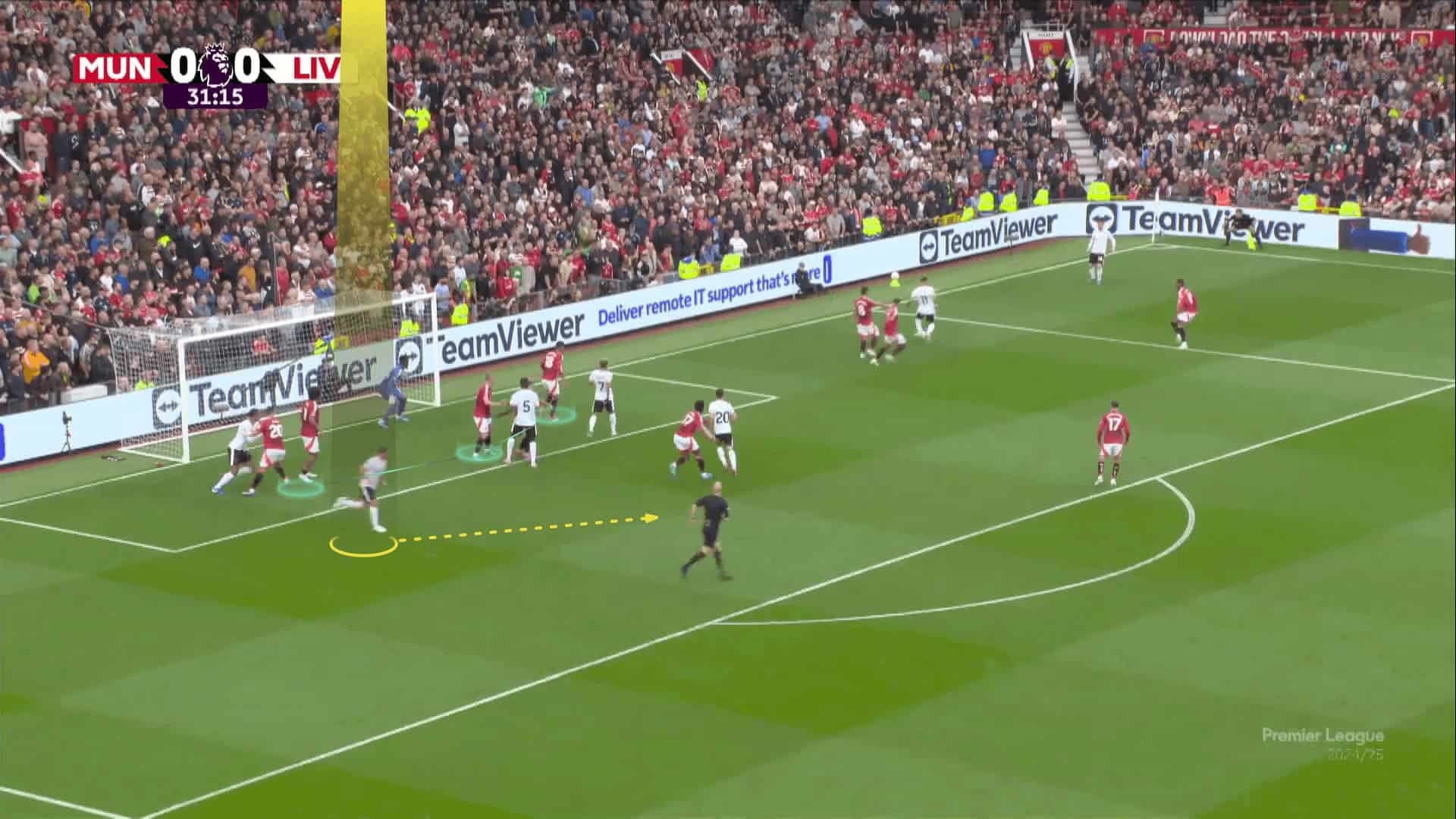
The plan works, but the ball hits Salah, unfortunately.
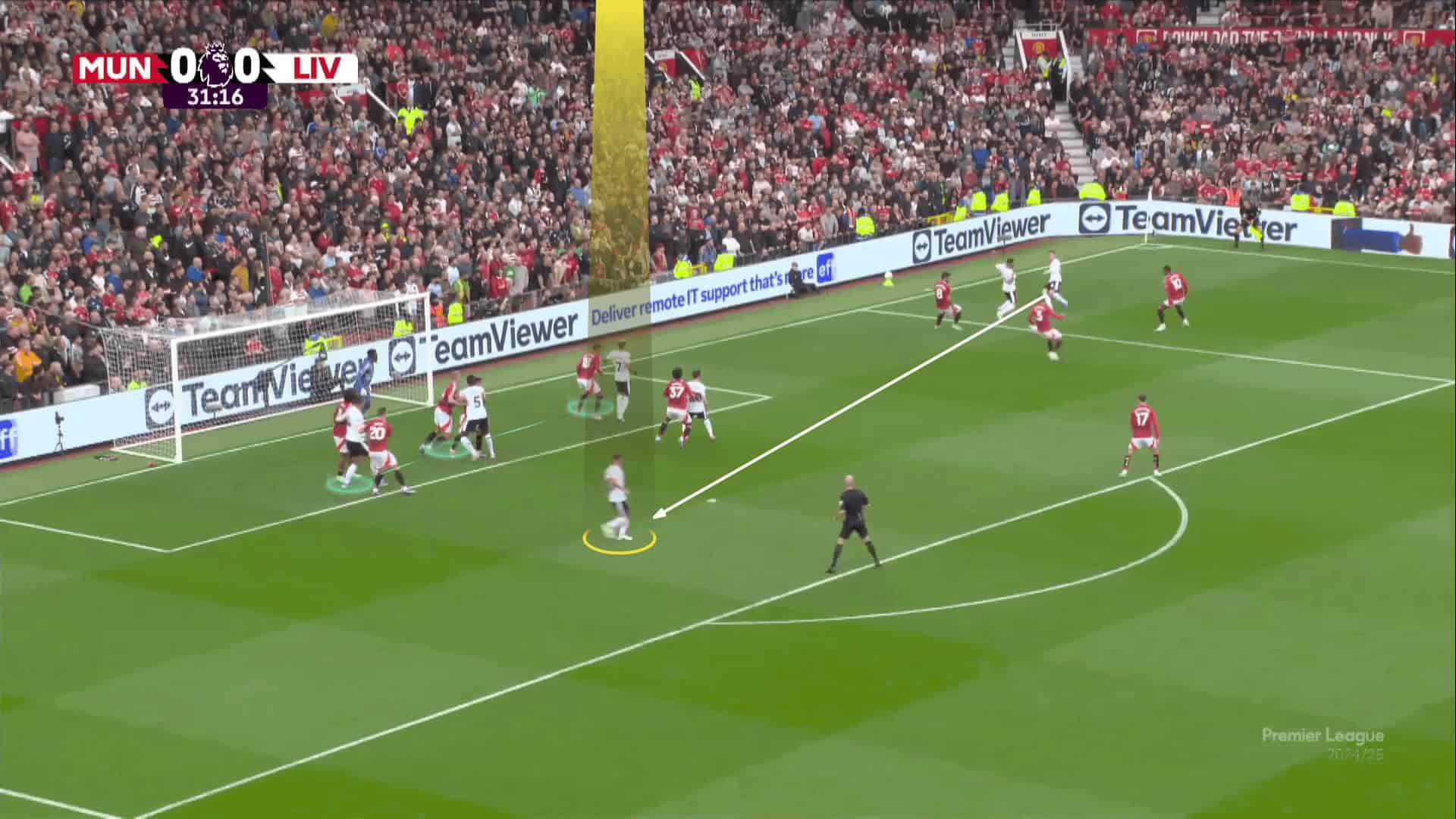
A Weakness
In most corners, they attack the box with six players while having two players for the rebound and a security player behind them.
The problem is that the two rebound players often stand so deep, not on the edge of the box, that the opponent can receive the second ball and may threaten the ball, as in the first two photos.
In the third photo, we see the previously failed trial of finding the flat passing lane, but here, we want to highlight that the two rebound players are also not close to the box, and the opponent’s players know that such short passes may lead to the ball loss.
The fourth photo shows that these two rebound players prefer to move back rather than being close from the beginning to press, which leads to a counterattack.
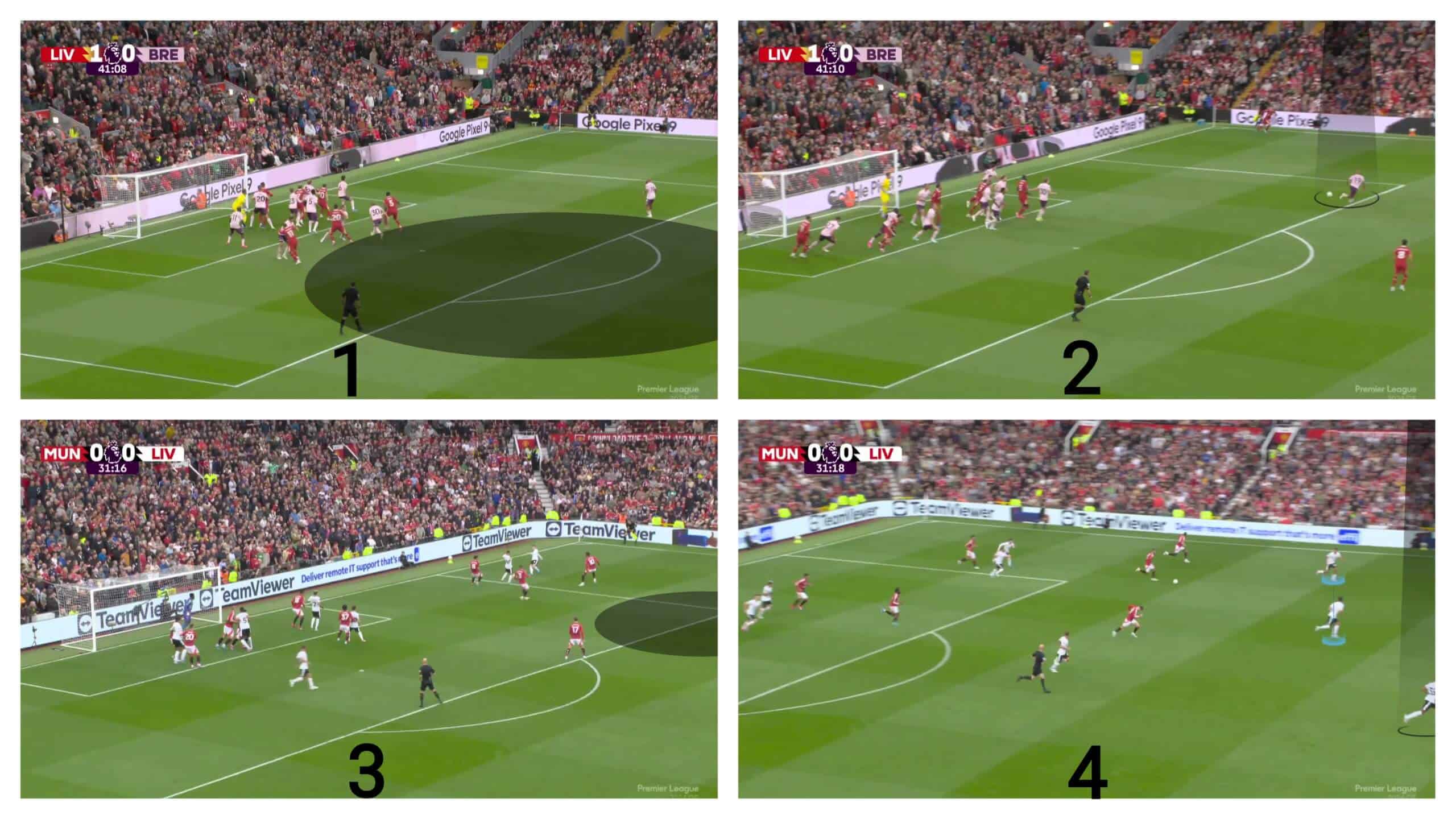
They depend on having an additional safety player at the back to deal with probable counterattacks, preferring to fall back rather than pressing to get the second ball from the beginning.
However, that doesn’t always work.
In the first photo below, the two rebound players have a good starting position this time, but they decide to fall back after that, allowing the opponent to have the second ball, as in the second photo below.
Letting the second ball to the opponent in this situation and deciding to fall back isn’t always safe, as the last two photos clearly show.
In them, the opponent manages to reach Liverpool’s box and has the ability to threaten the goal, but the goalkeeper cuts the crossing path.
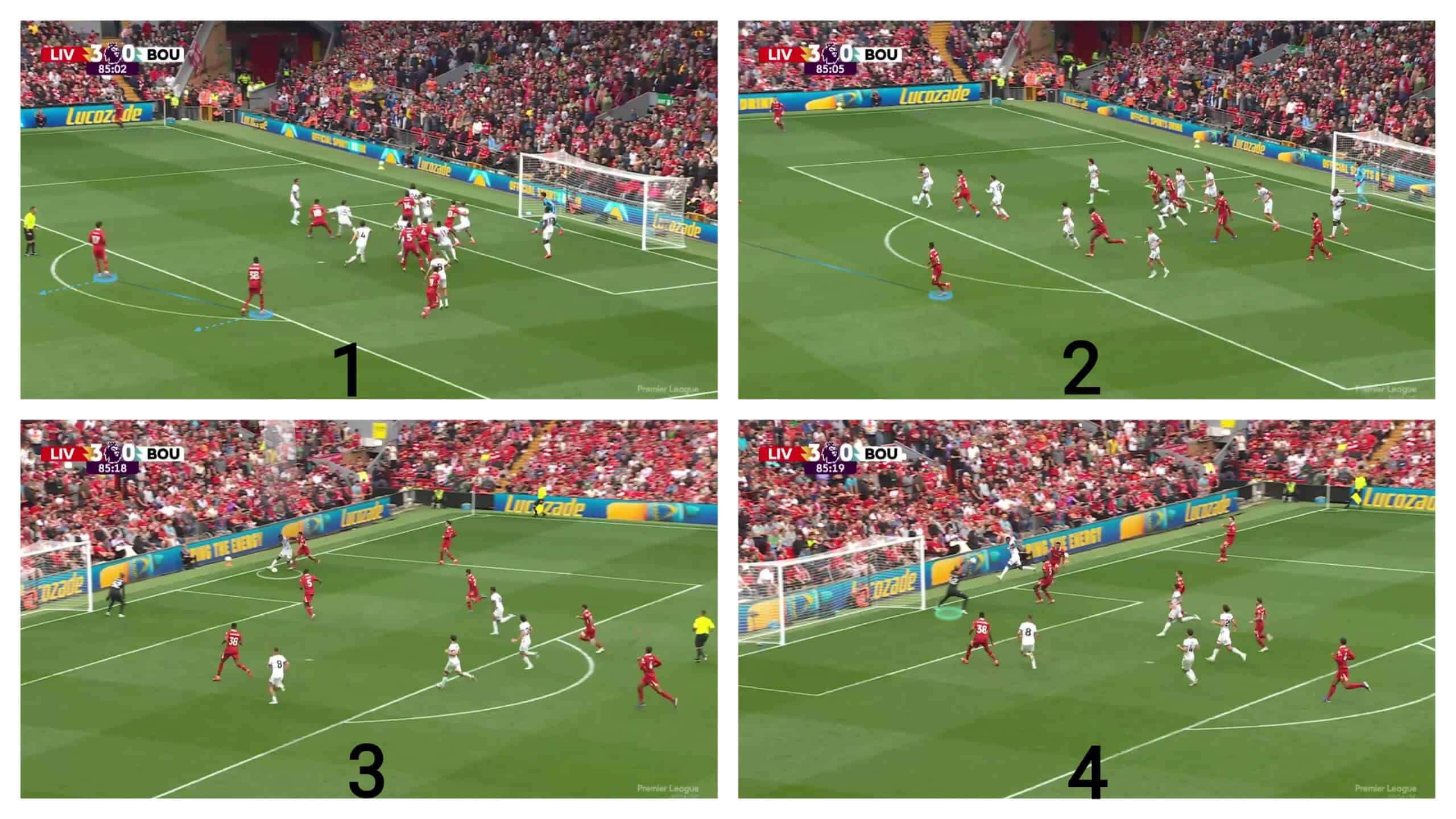
To show you what we mean, Arsenal’s two rebound players below are standing close to the edge of the box.
The player on the ball’s side is going into the box to press, preventing the opponent from setting up a good counterattack.
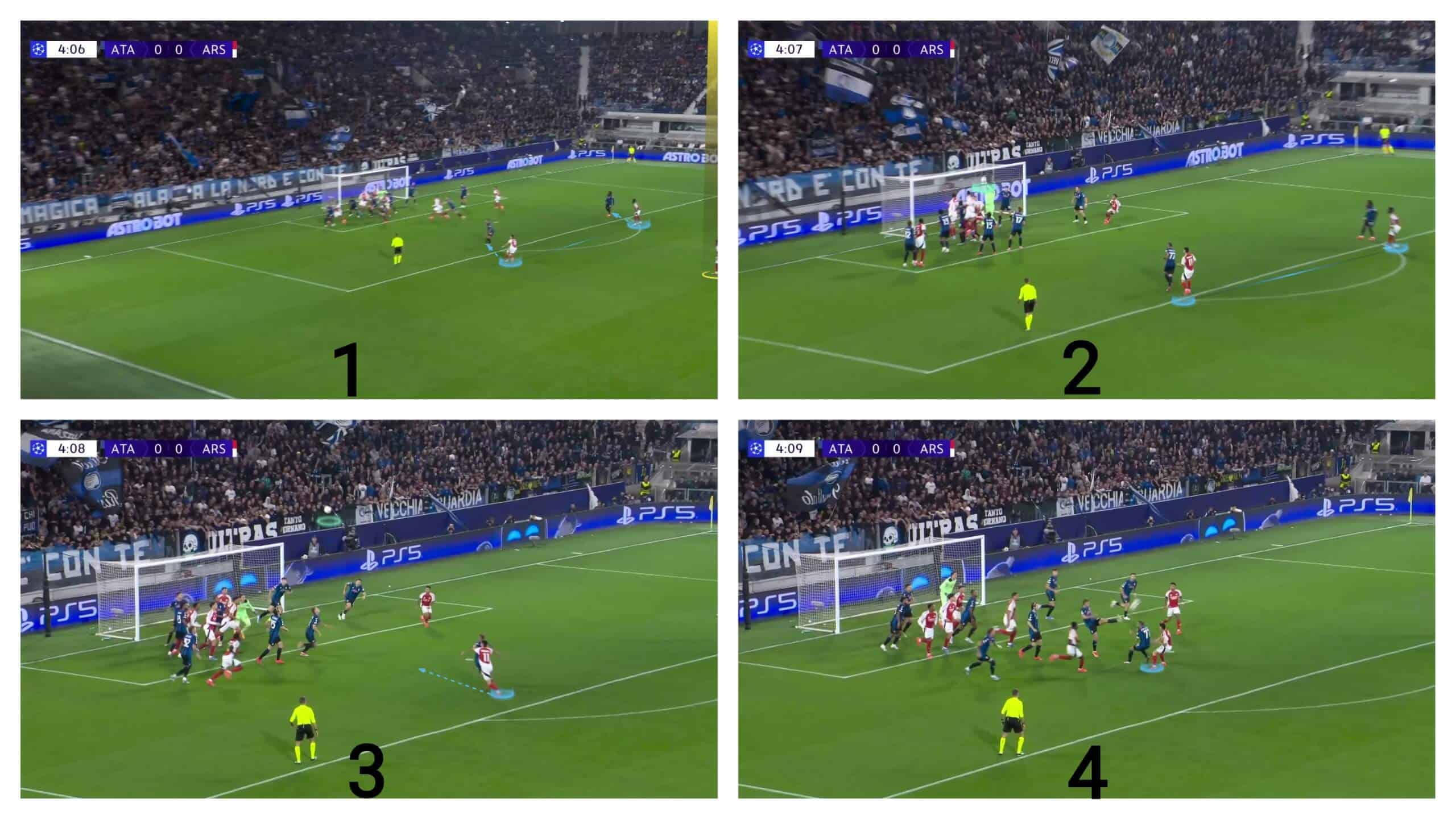
They also instruct these two players to adapt to the targeted area, meaning that they stand toward the near post if the targeted area is there, allowing these players to press in high positions and get the ball back to prevent any counterattack while also allowing them to keep their attack going.
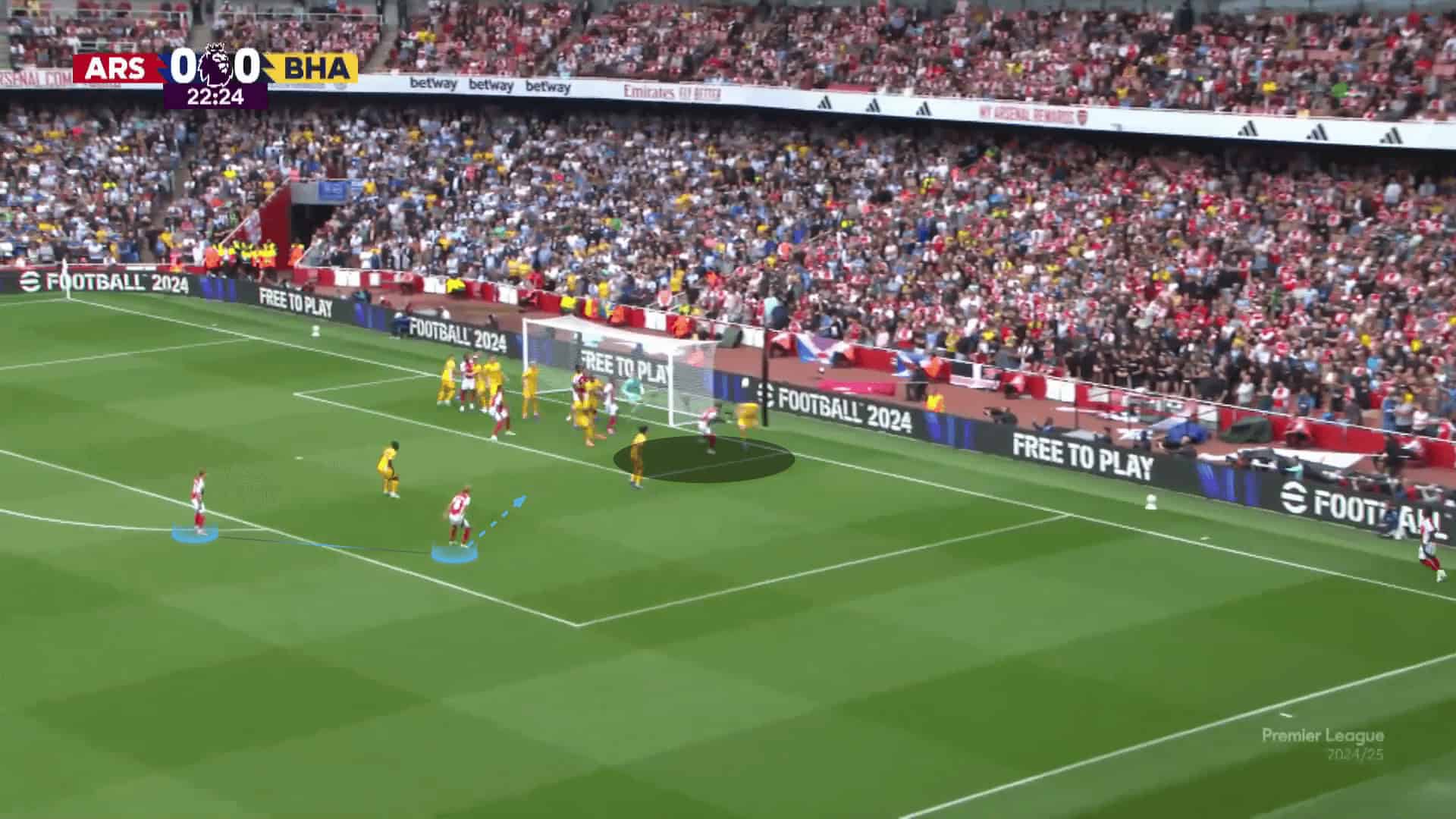
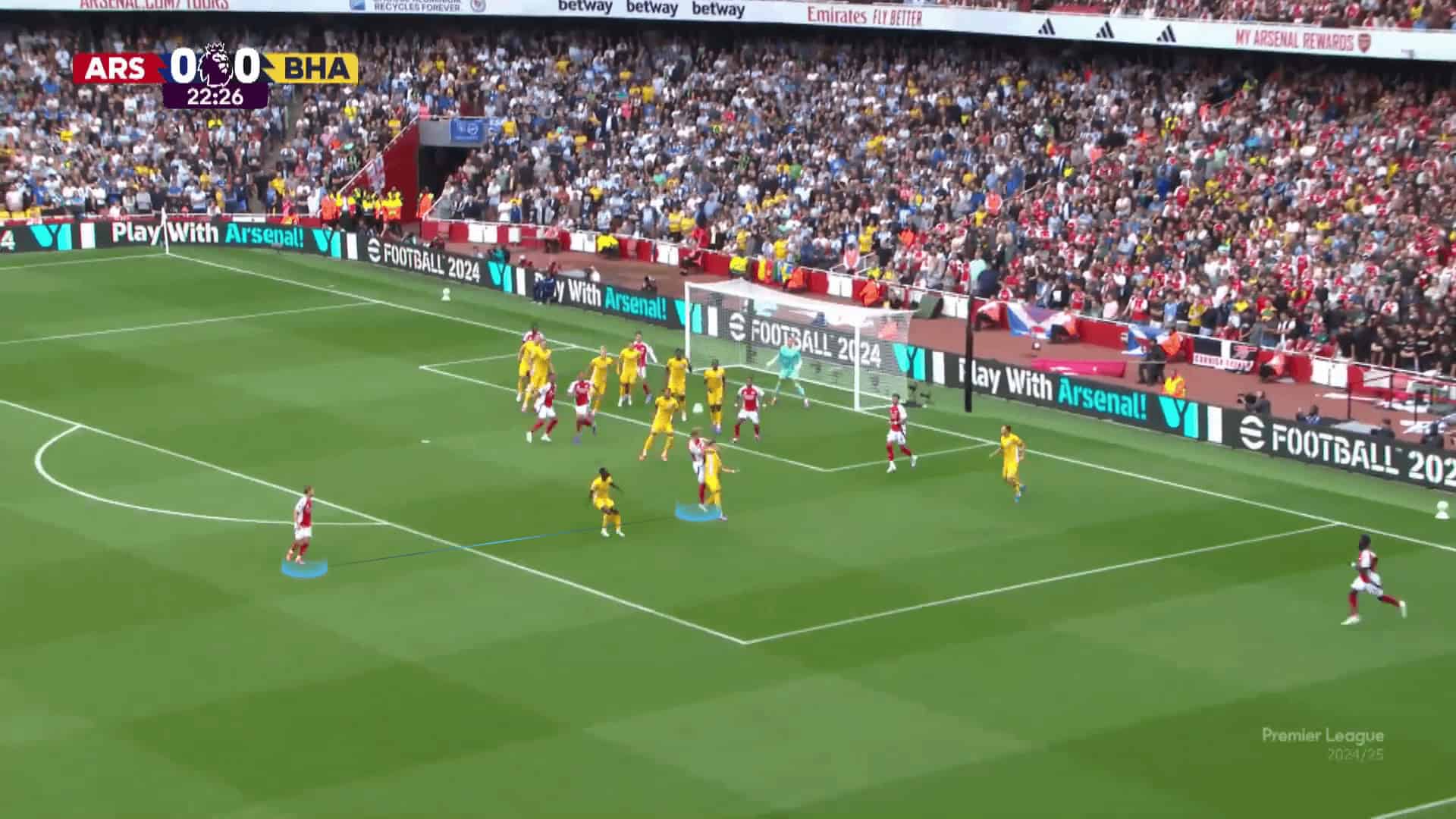
Conclusion
In this analysis, we have shown Liverpool’s new style in attacking corners in Arne Slot’s new era with the innovations of Aaron Briggs.
In this set-piece analysis, we have explained the effect of Virgil Van Dijk’s different starting positions while having the direct shot and the flat-passing-lane option to sudden the opponent.
We have also shown a weakness that makes them receive counterattacks.






Comments